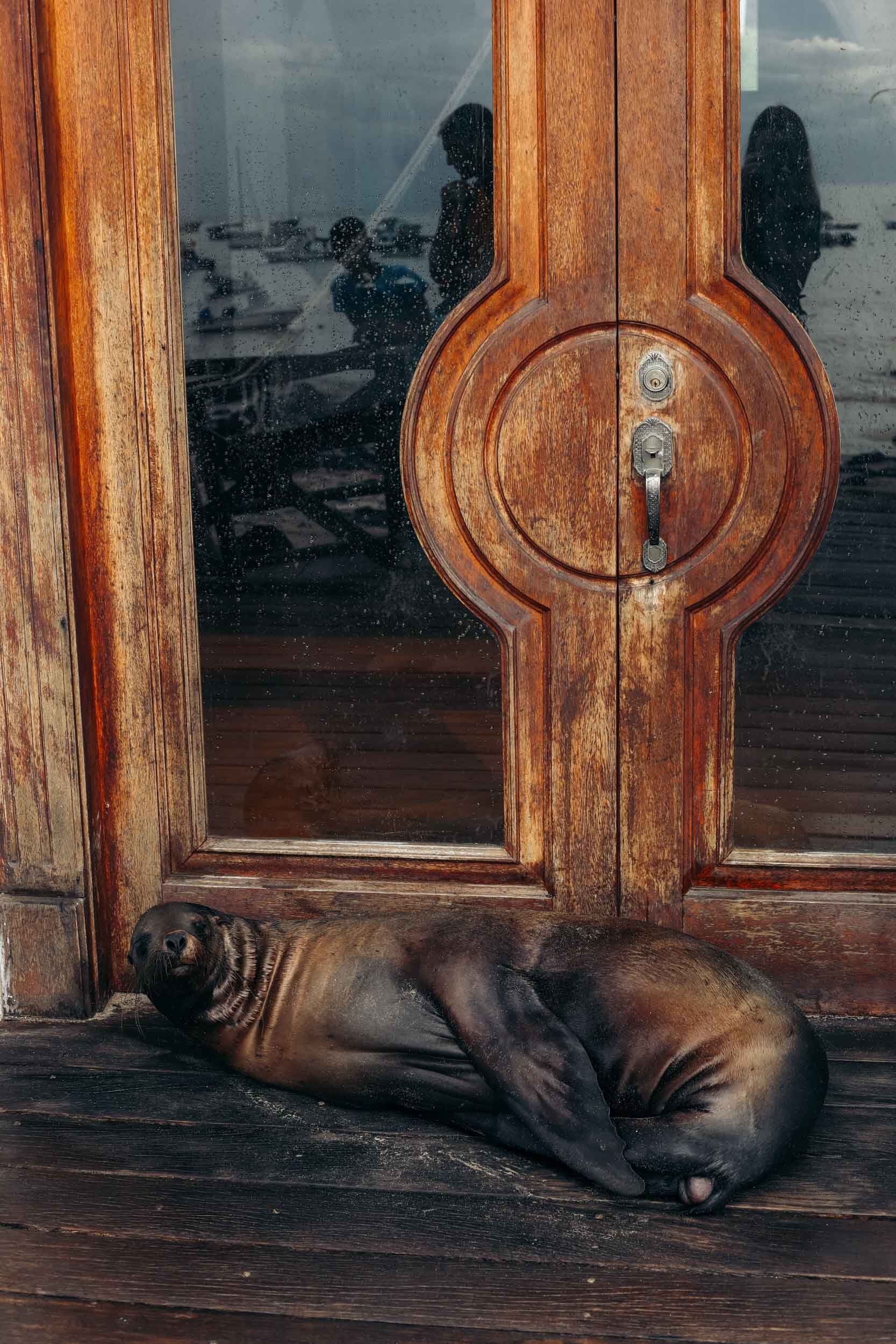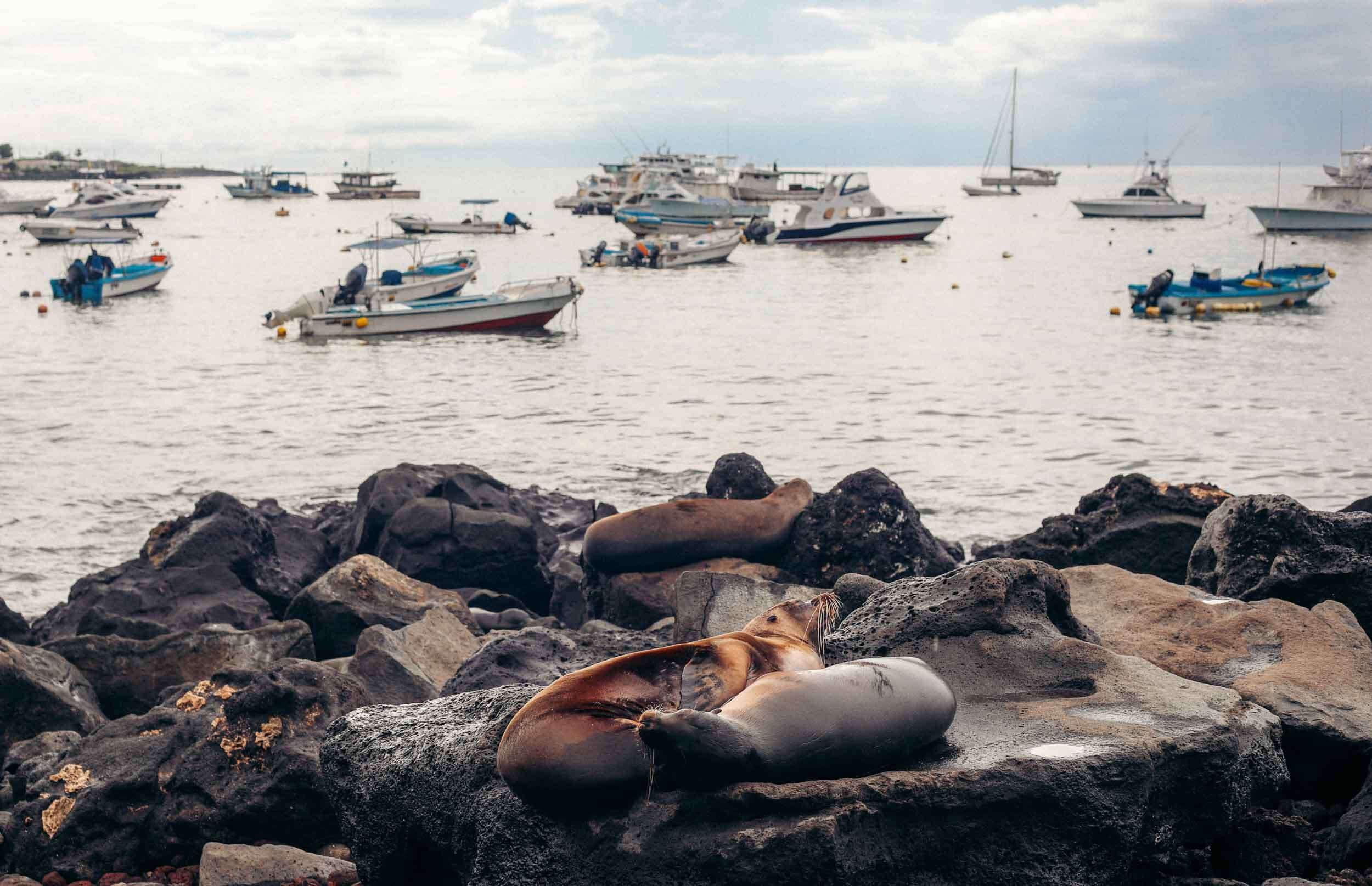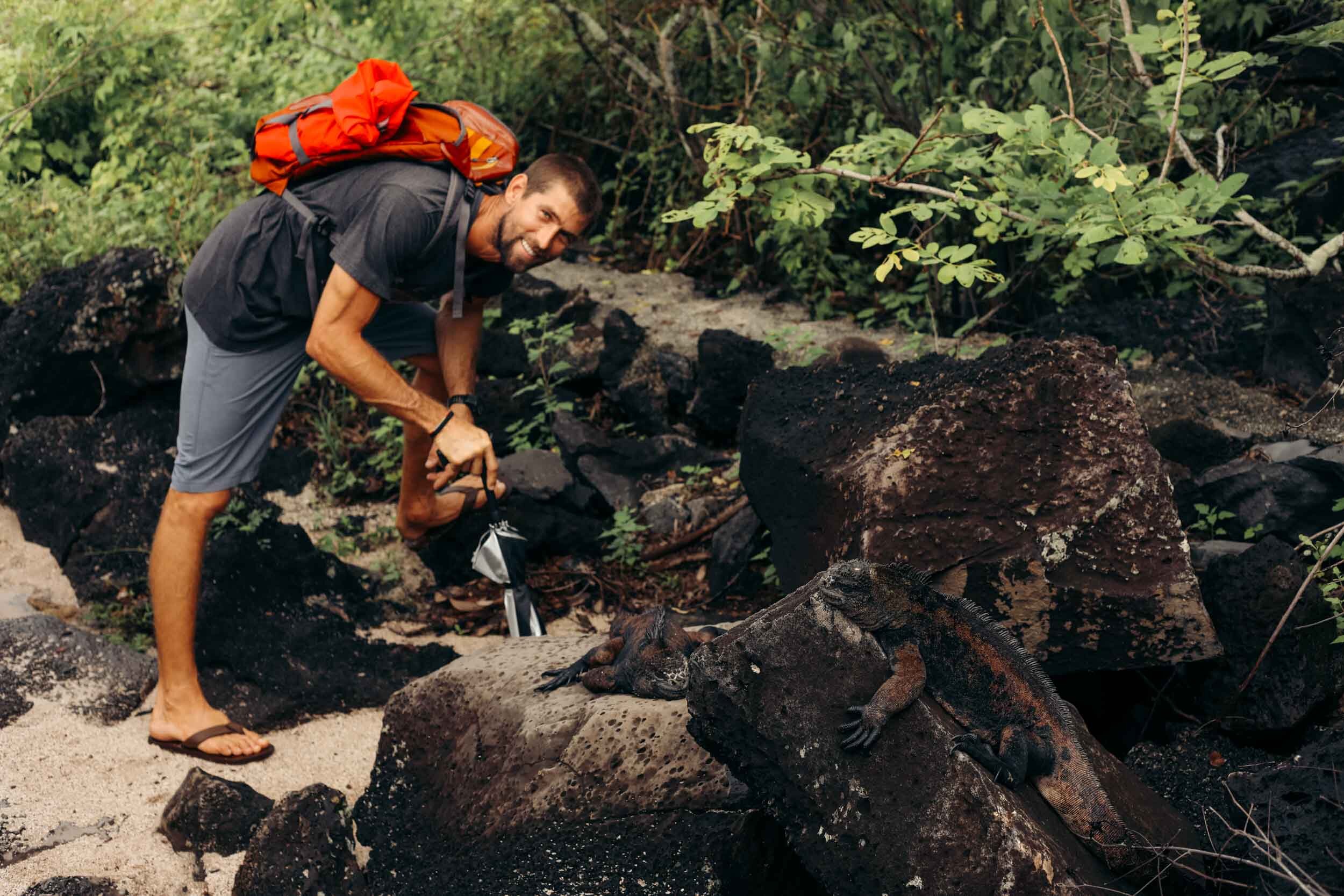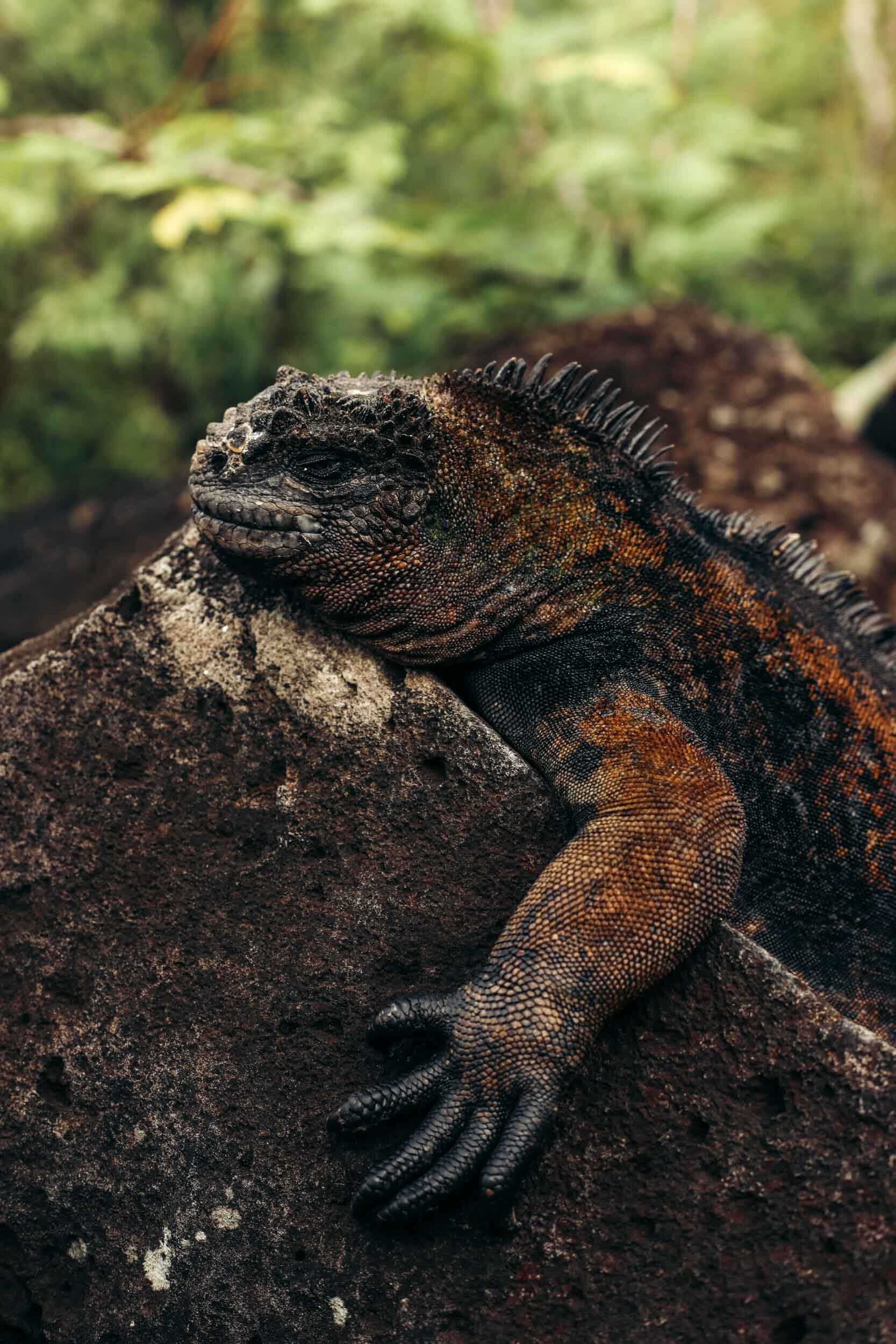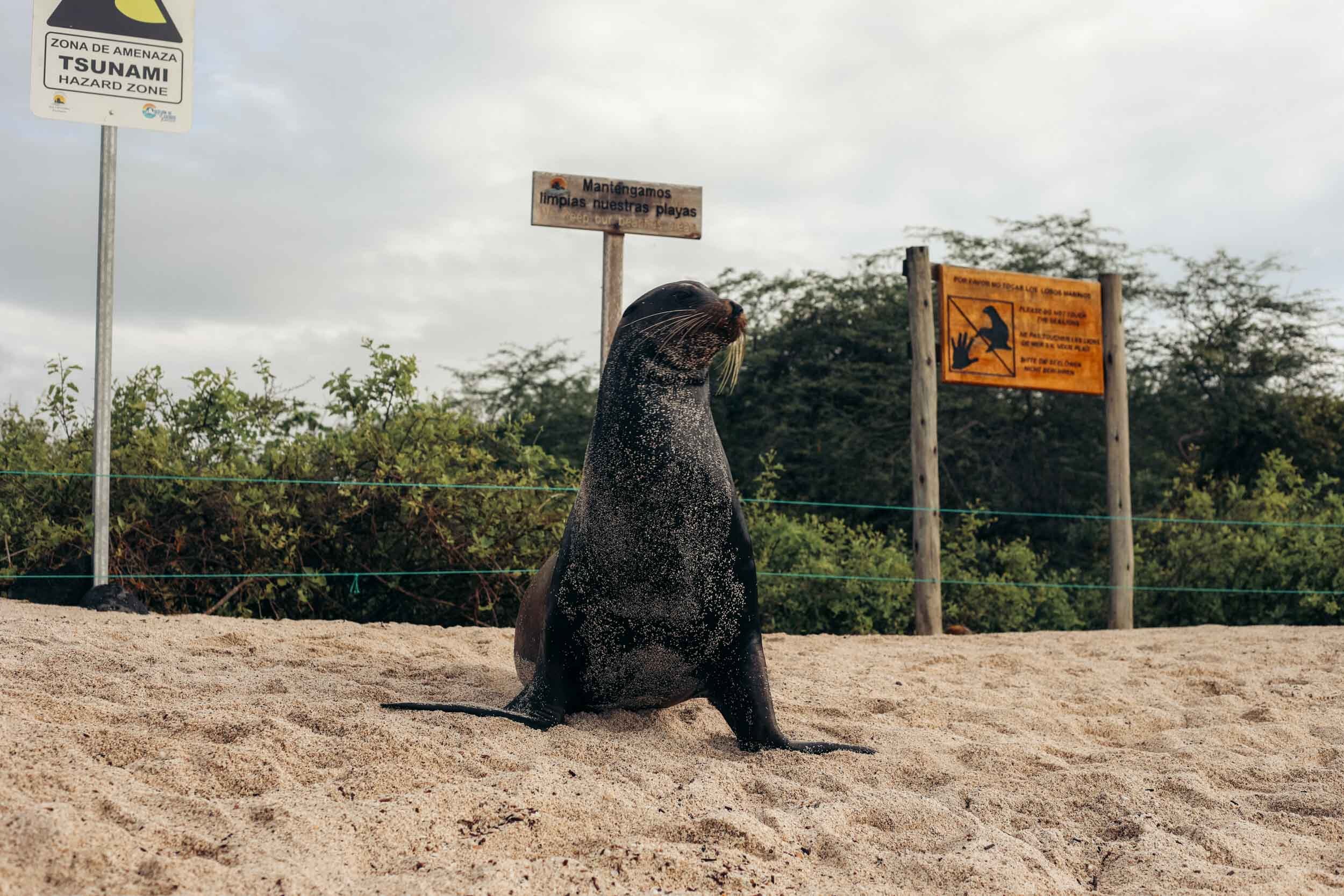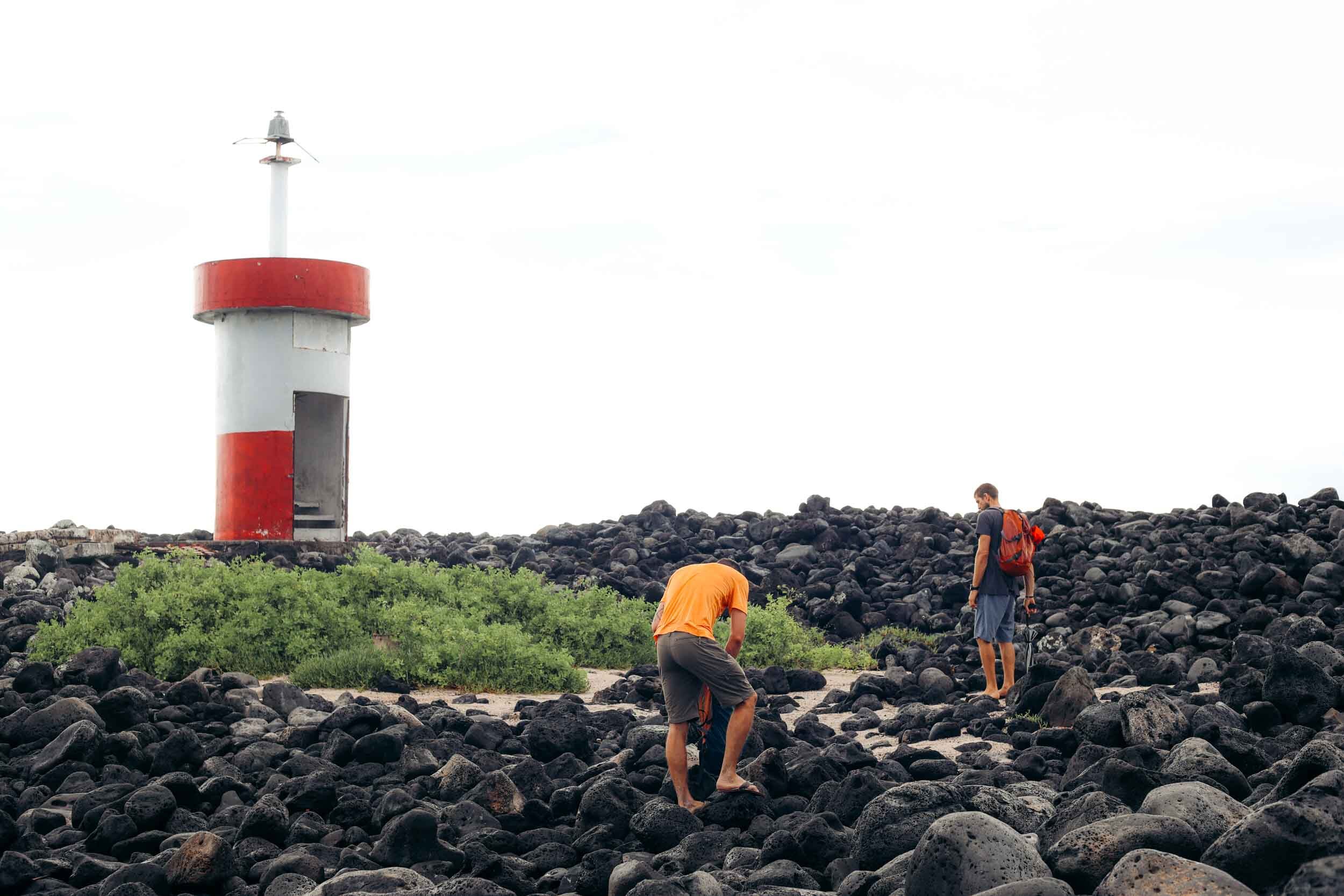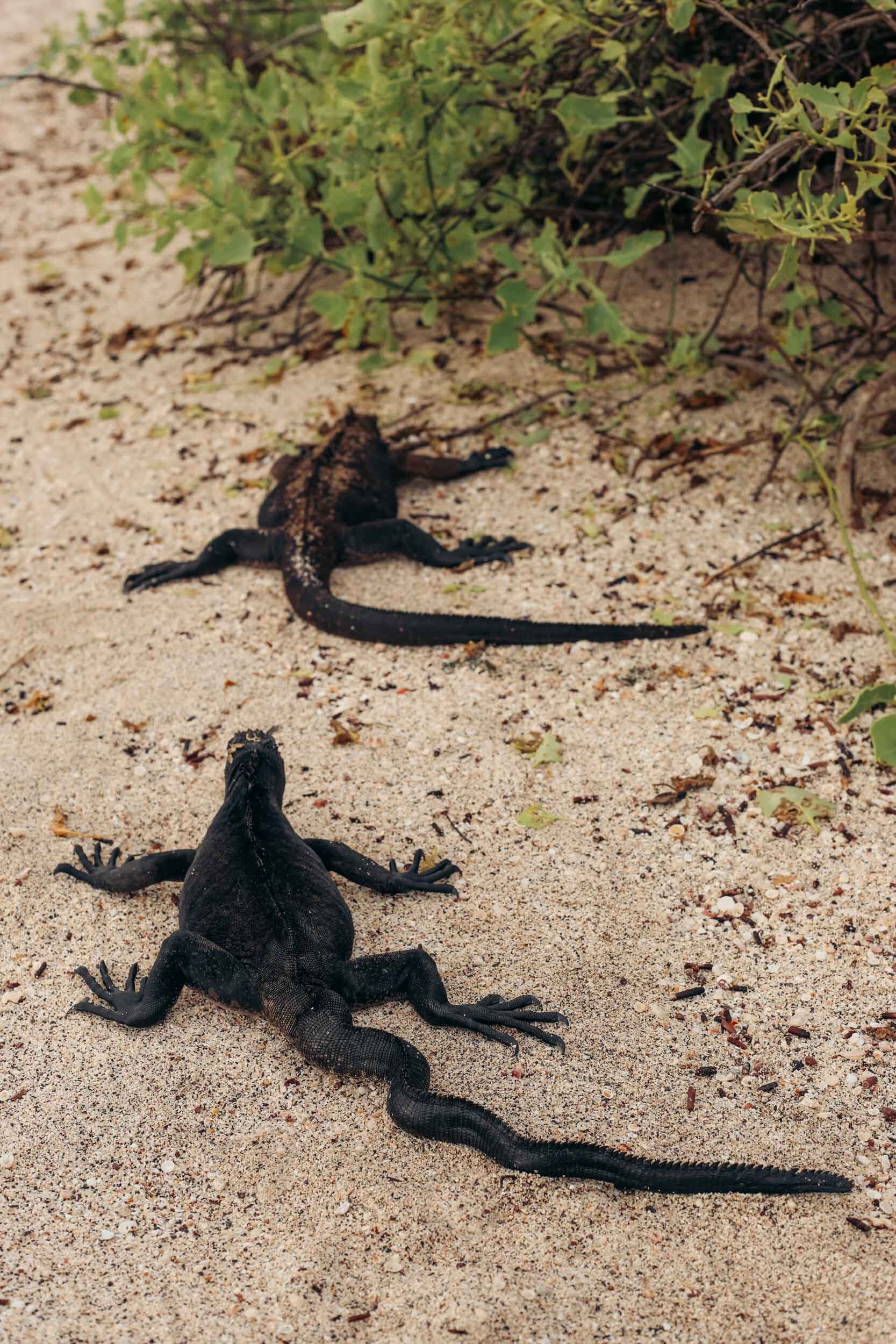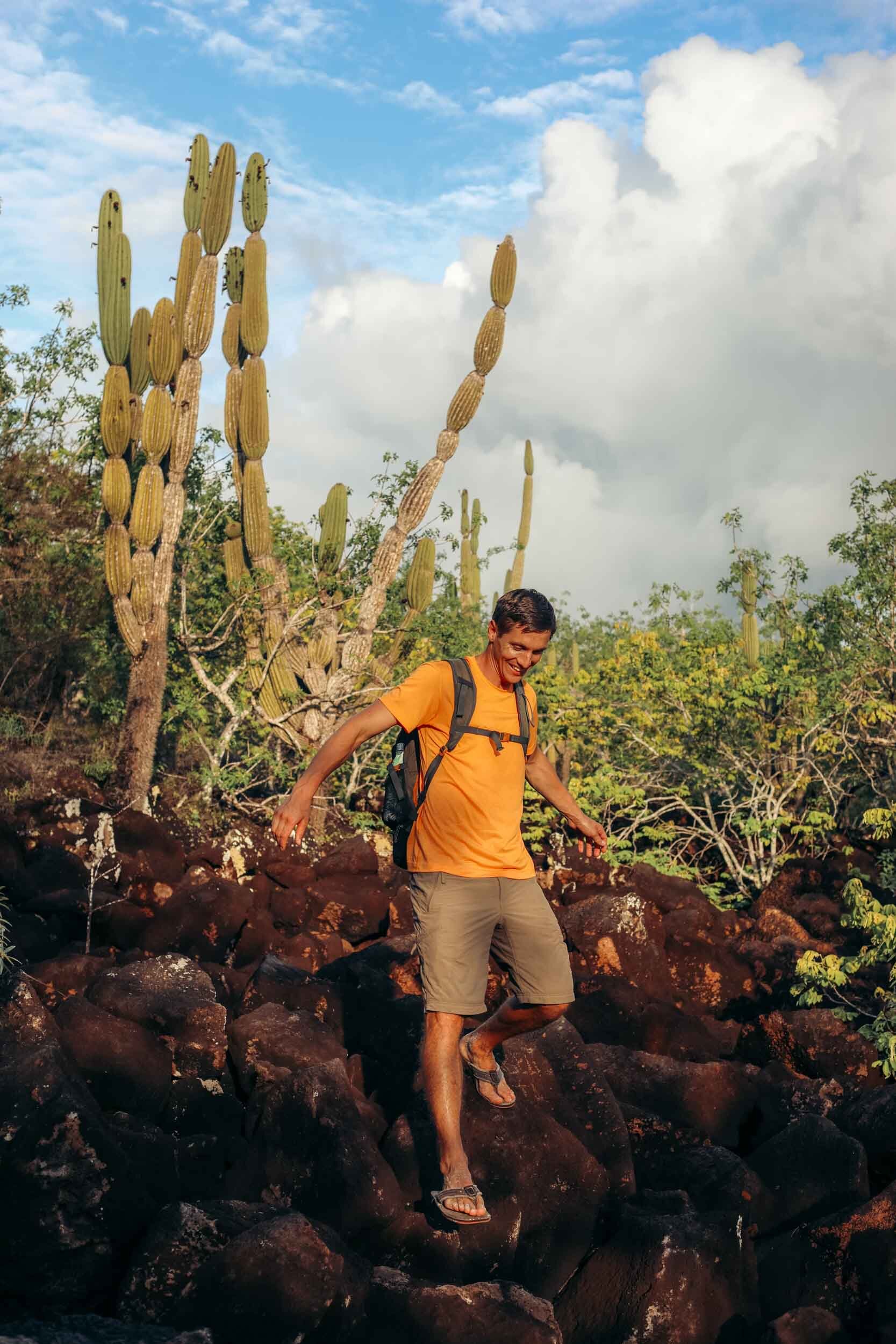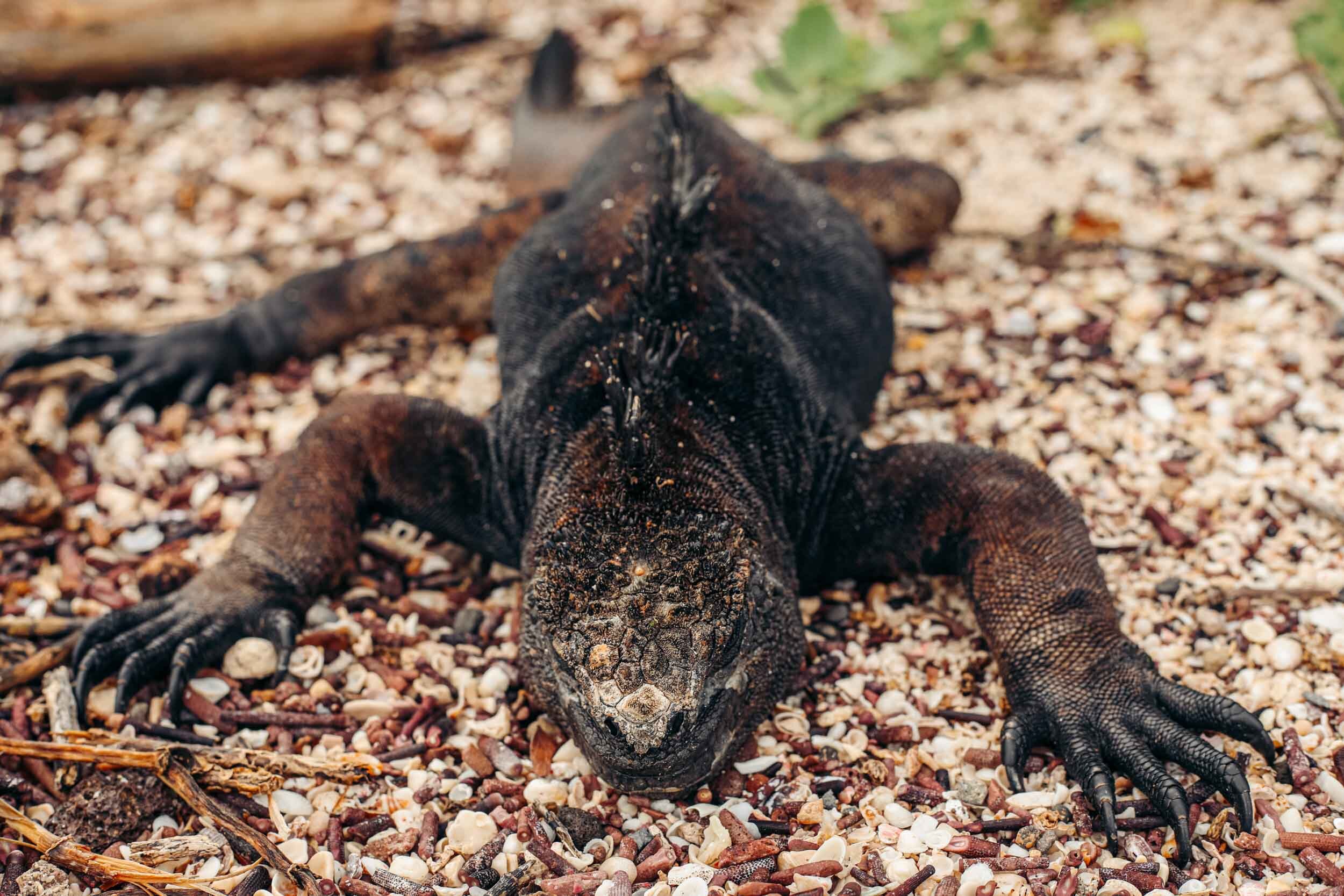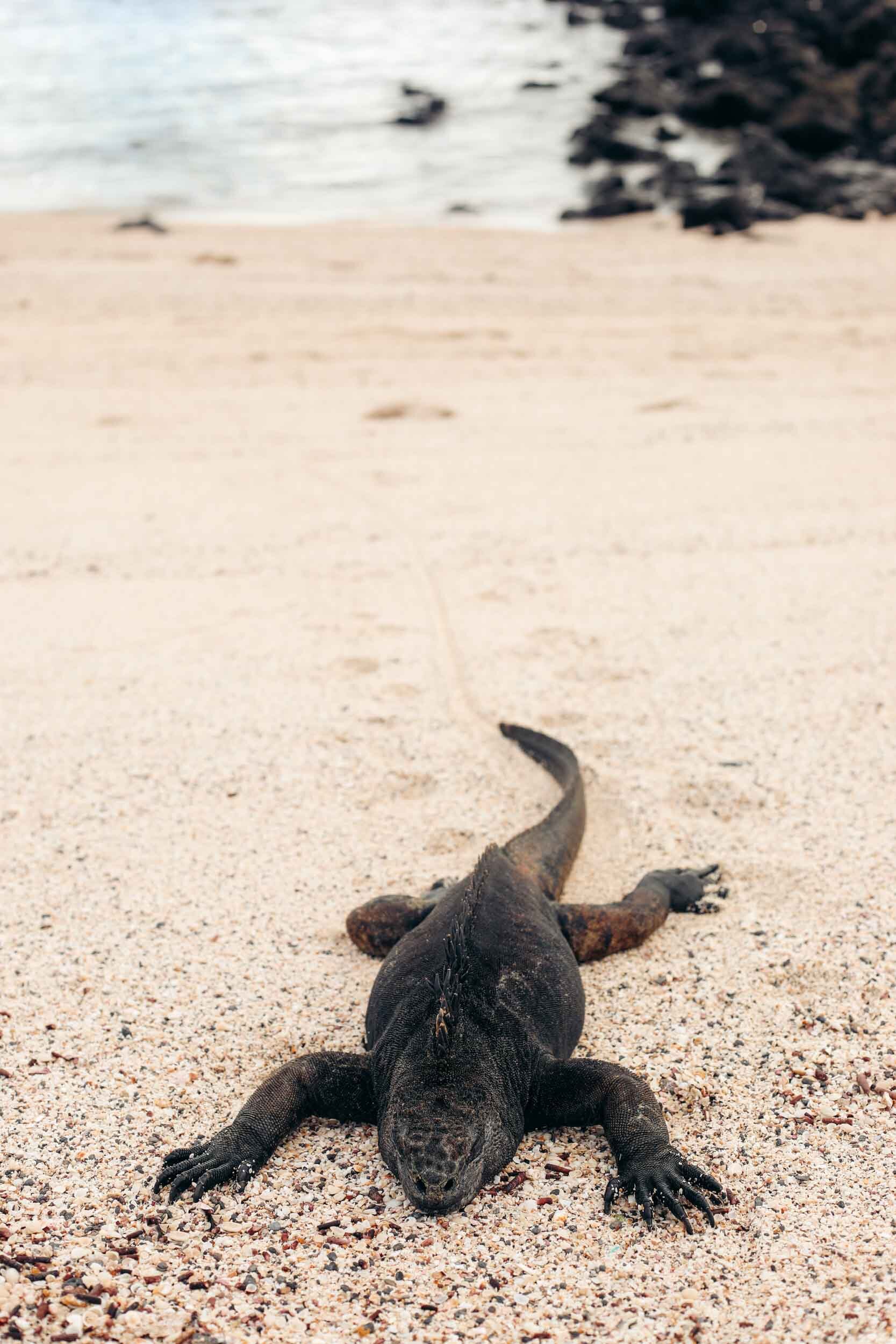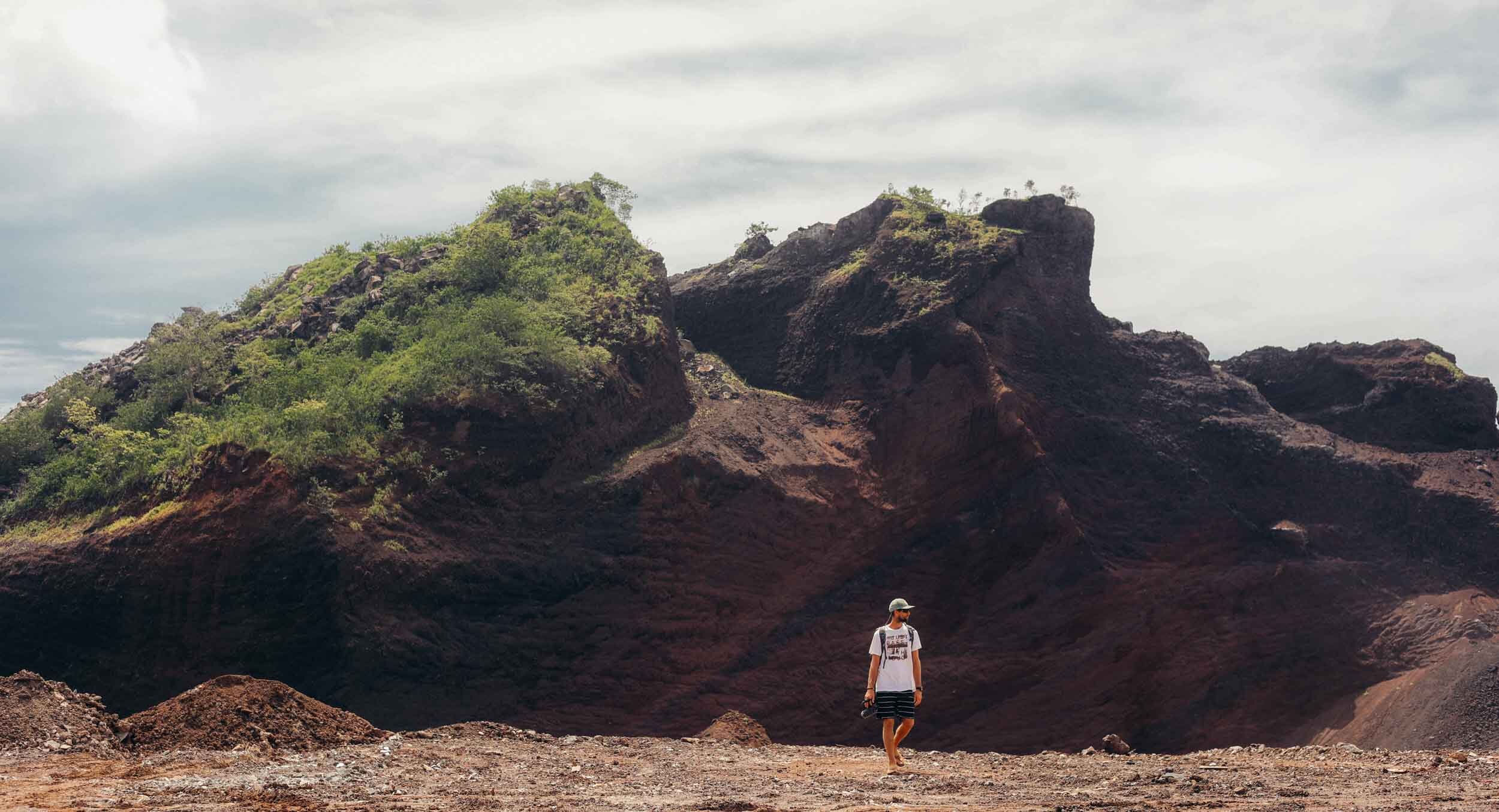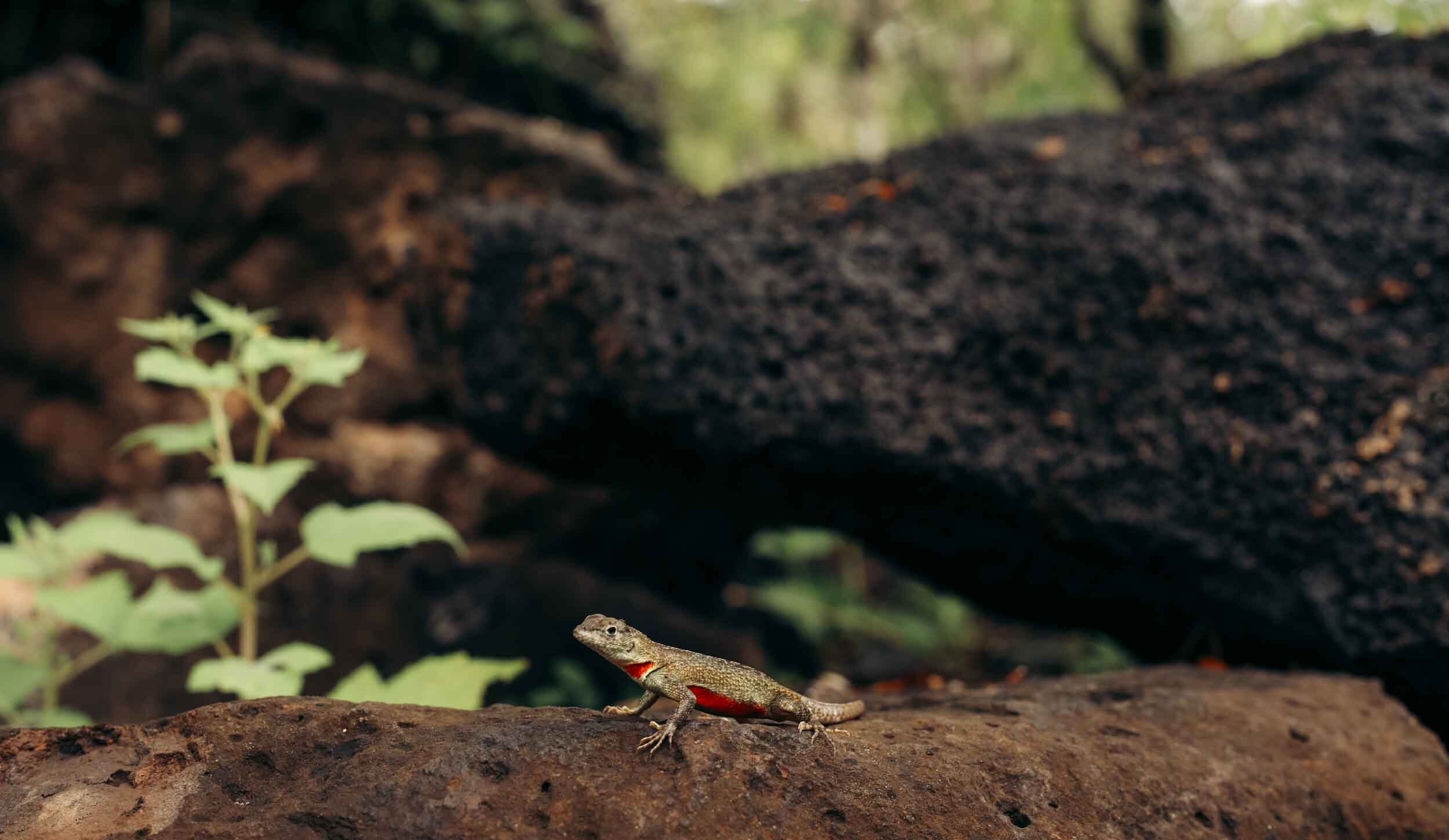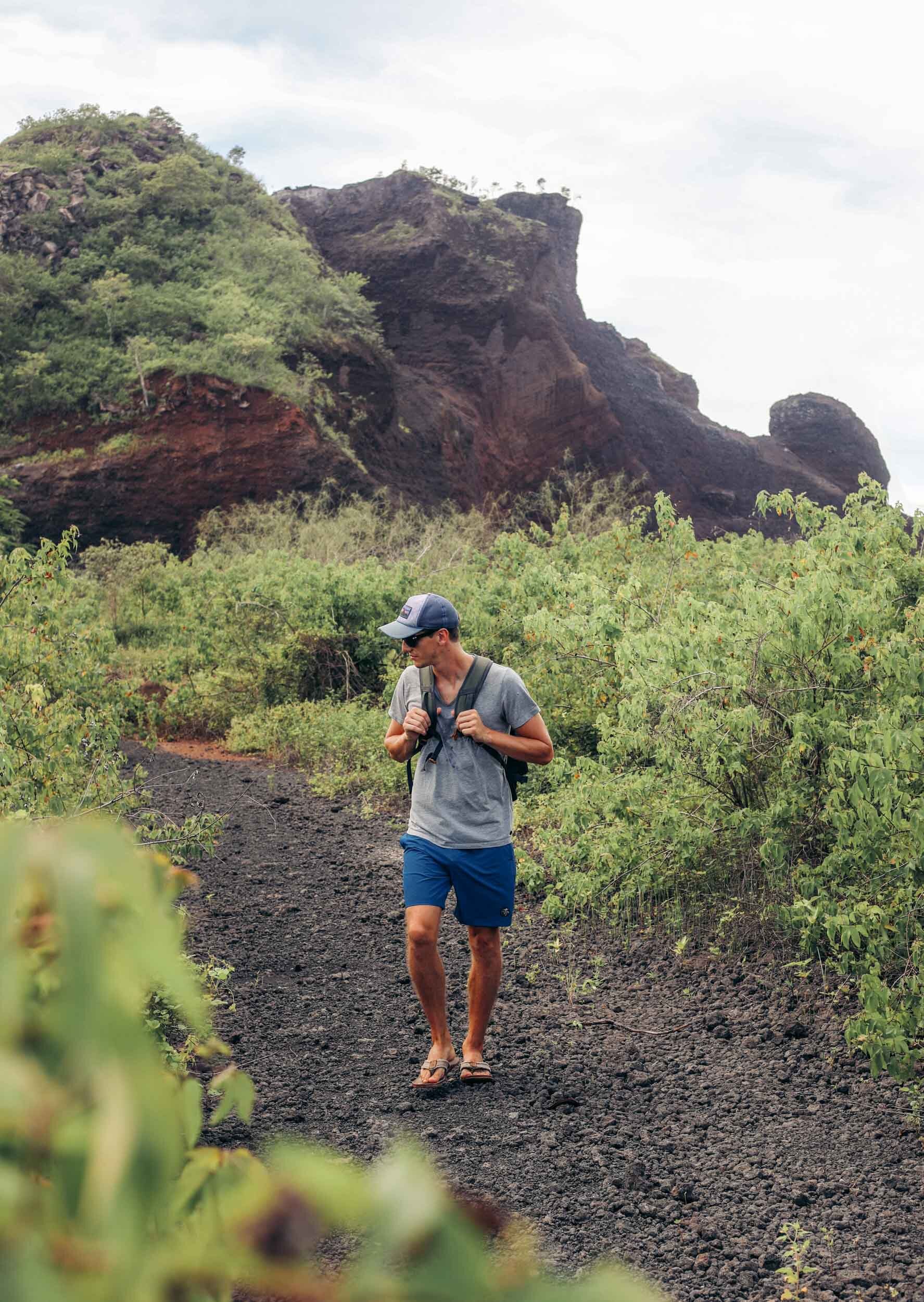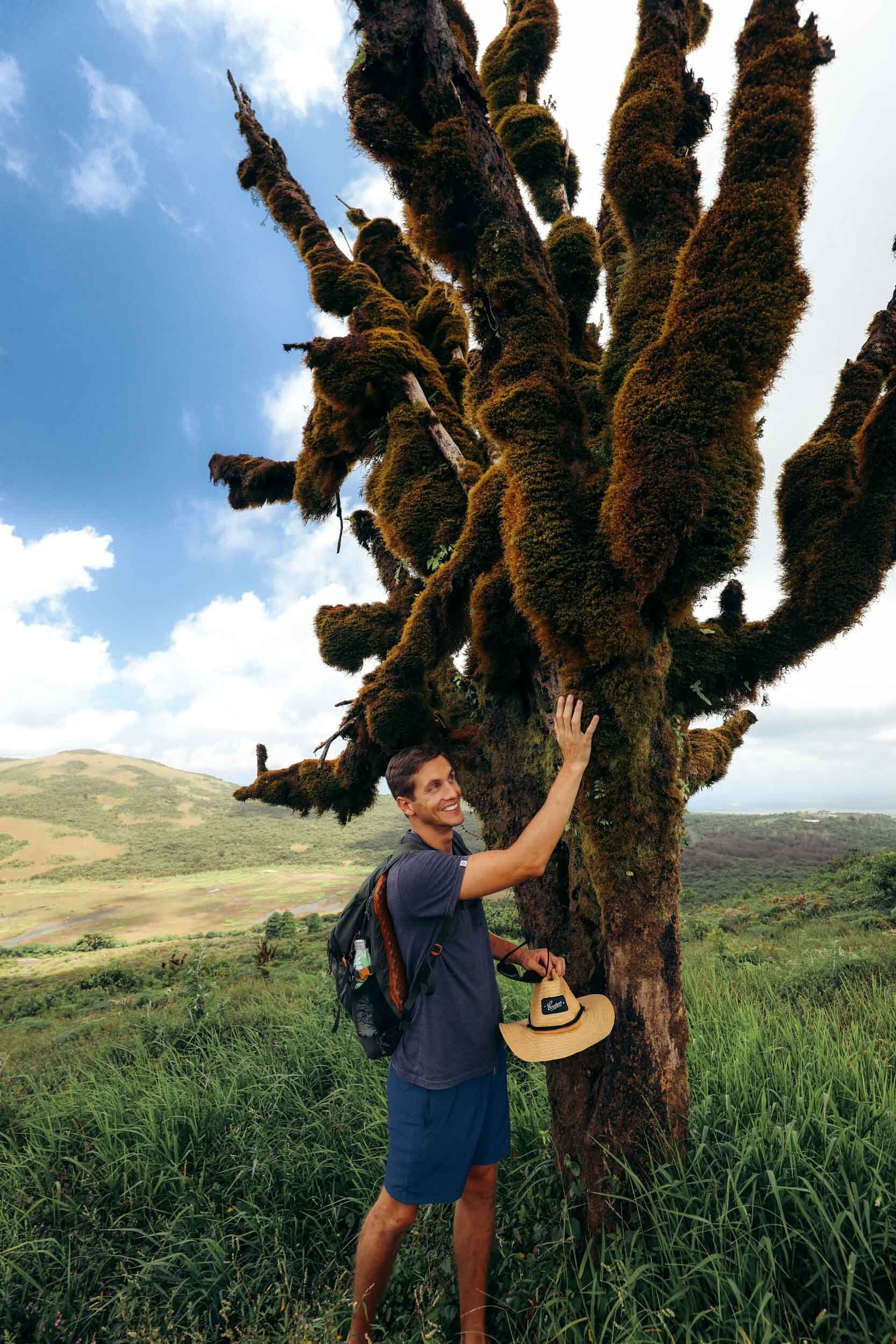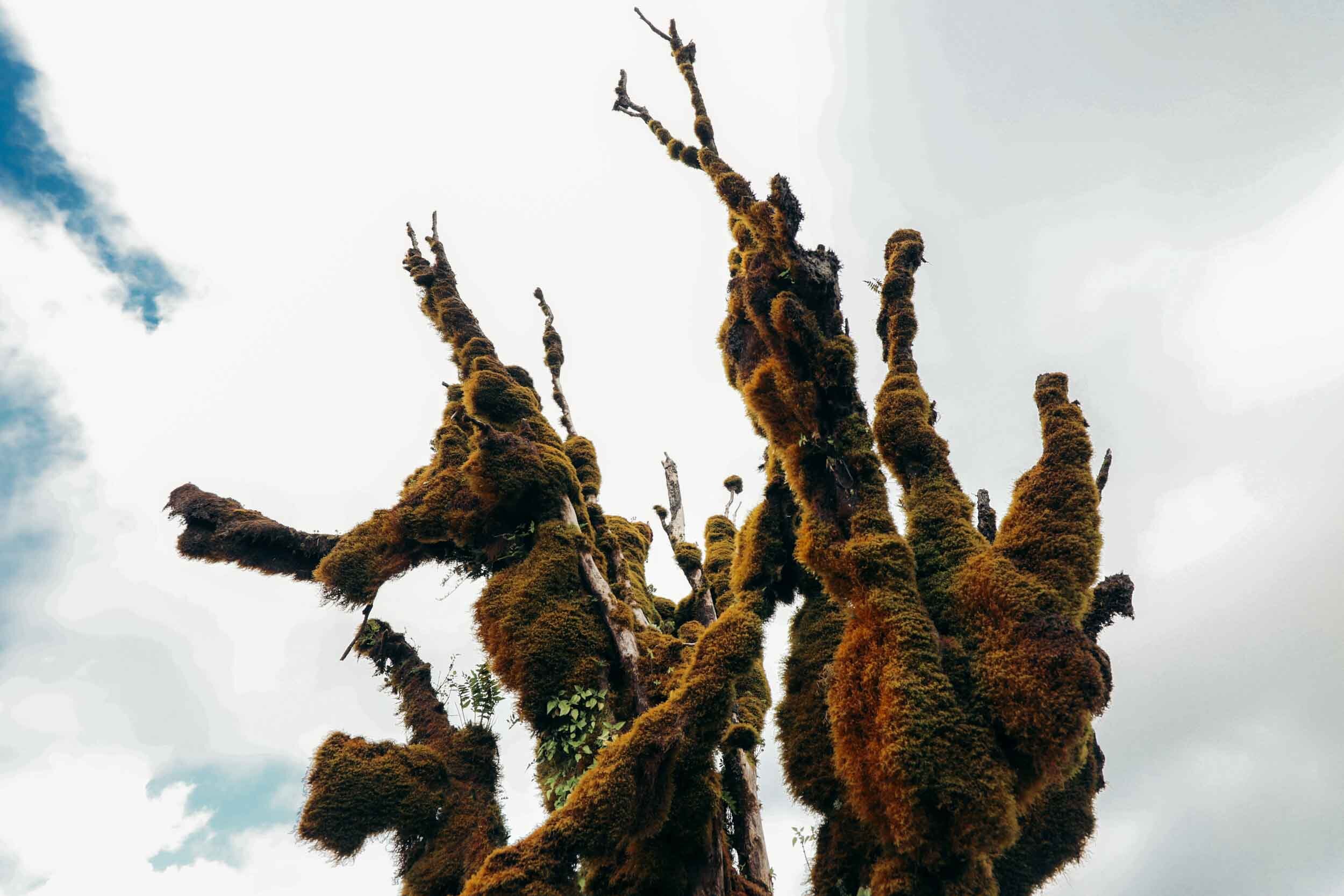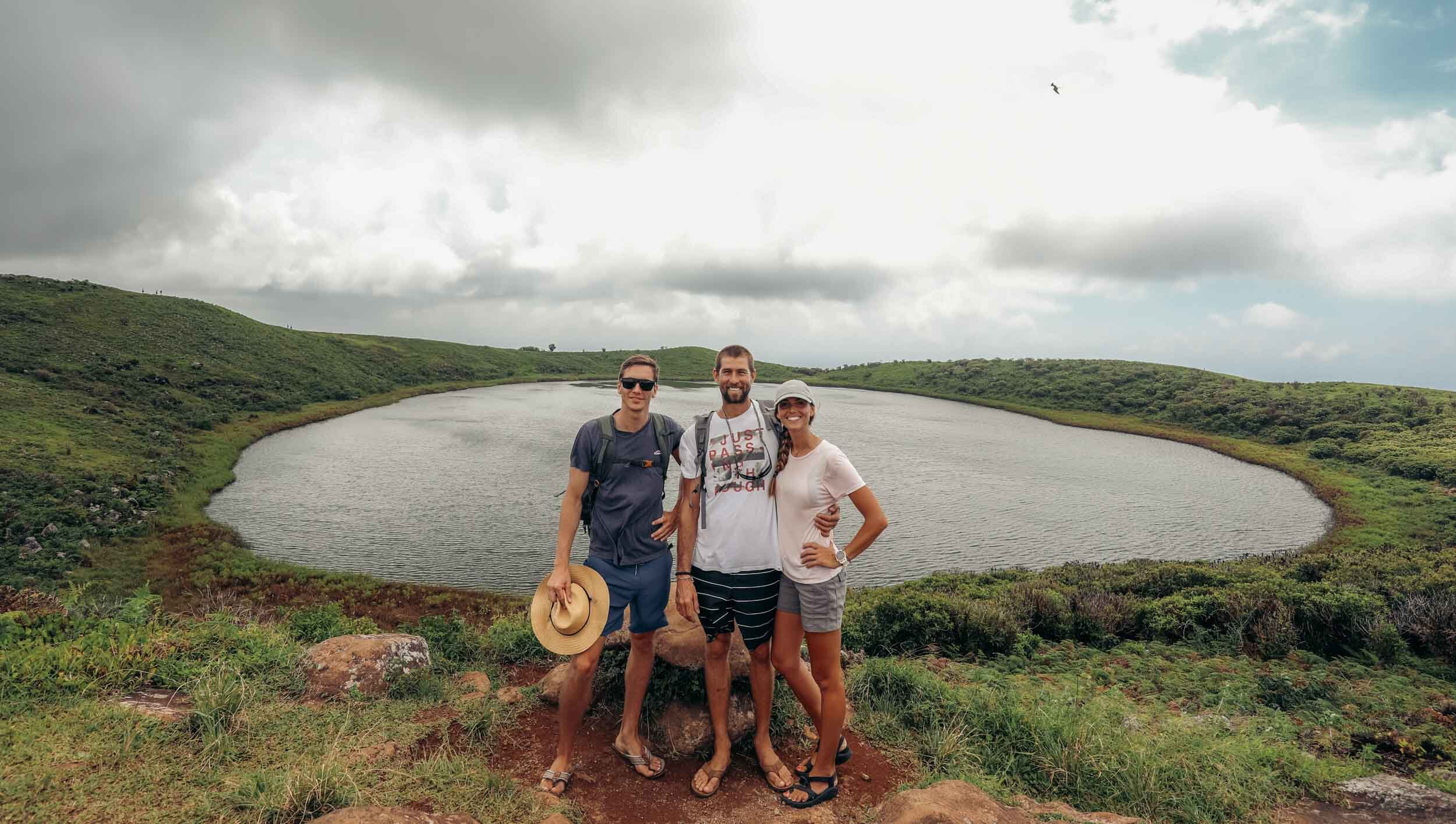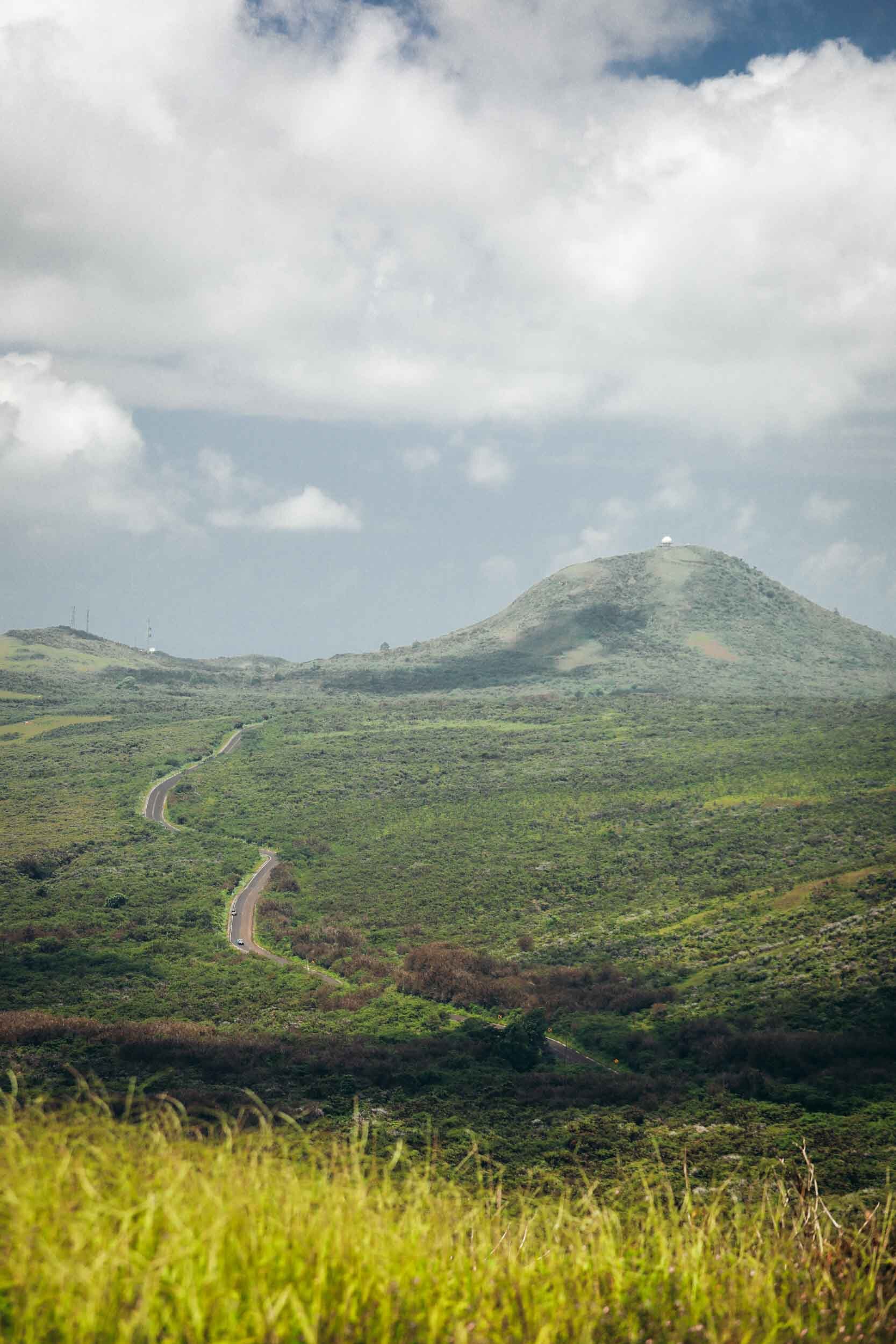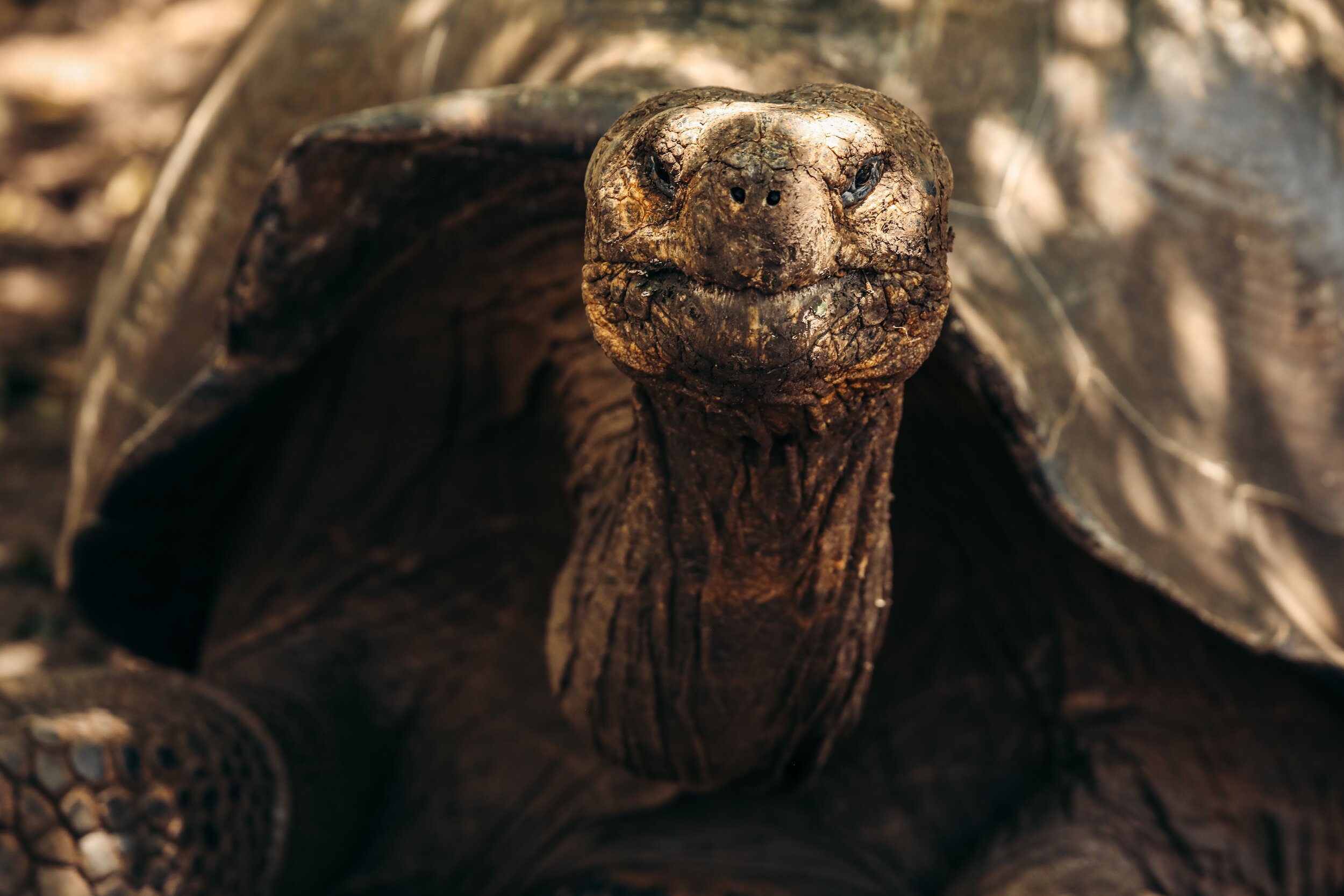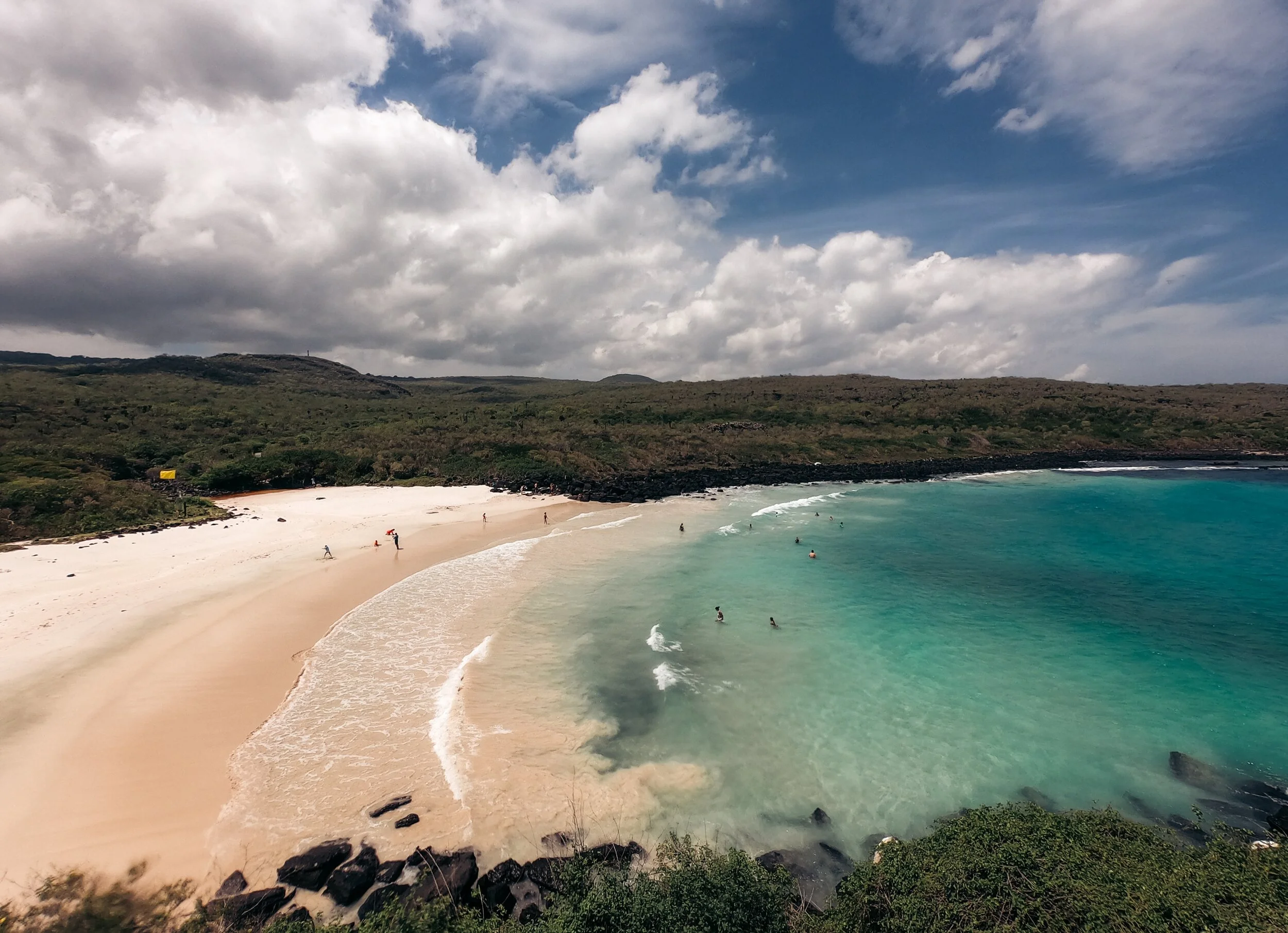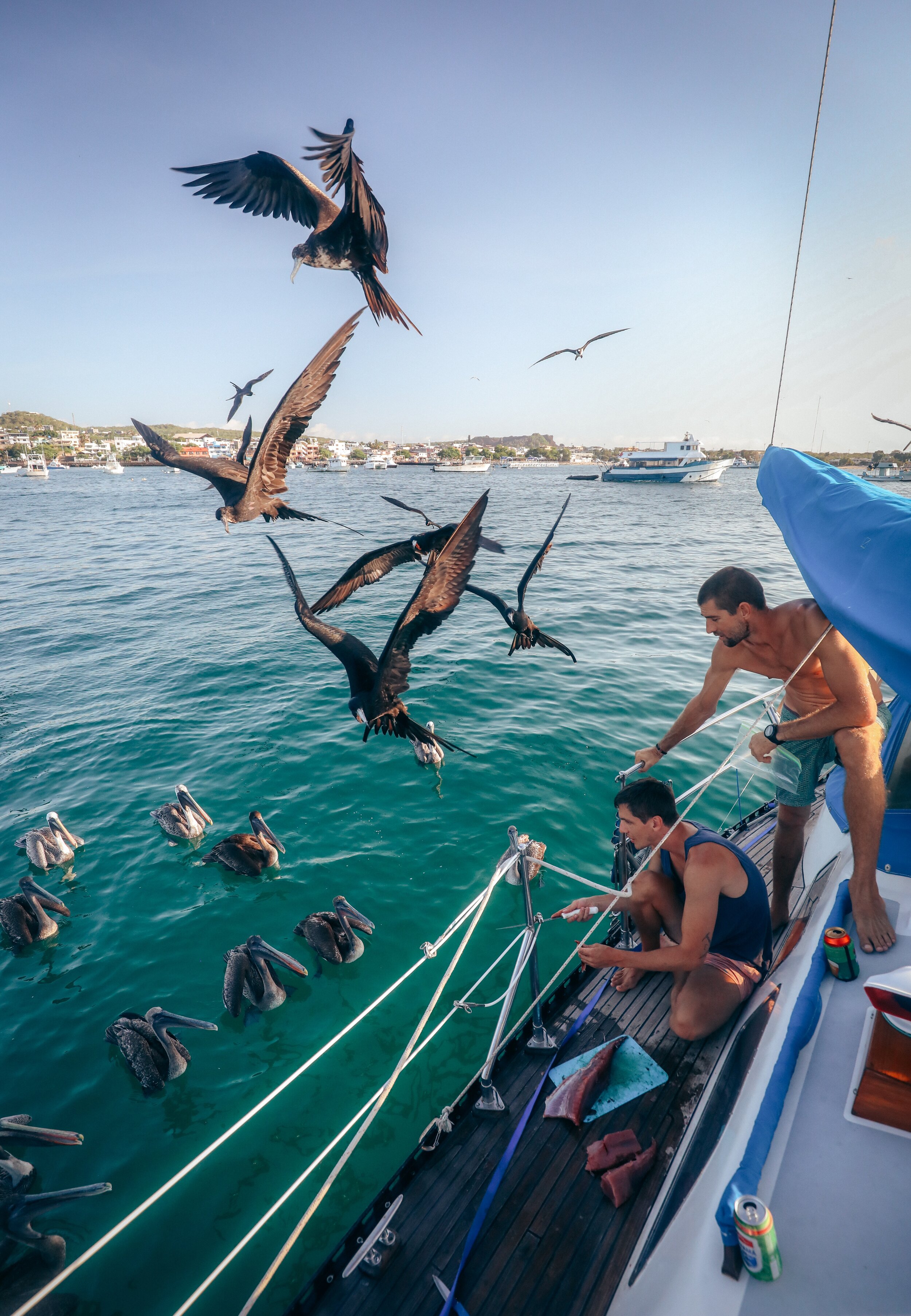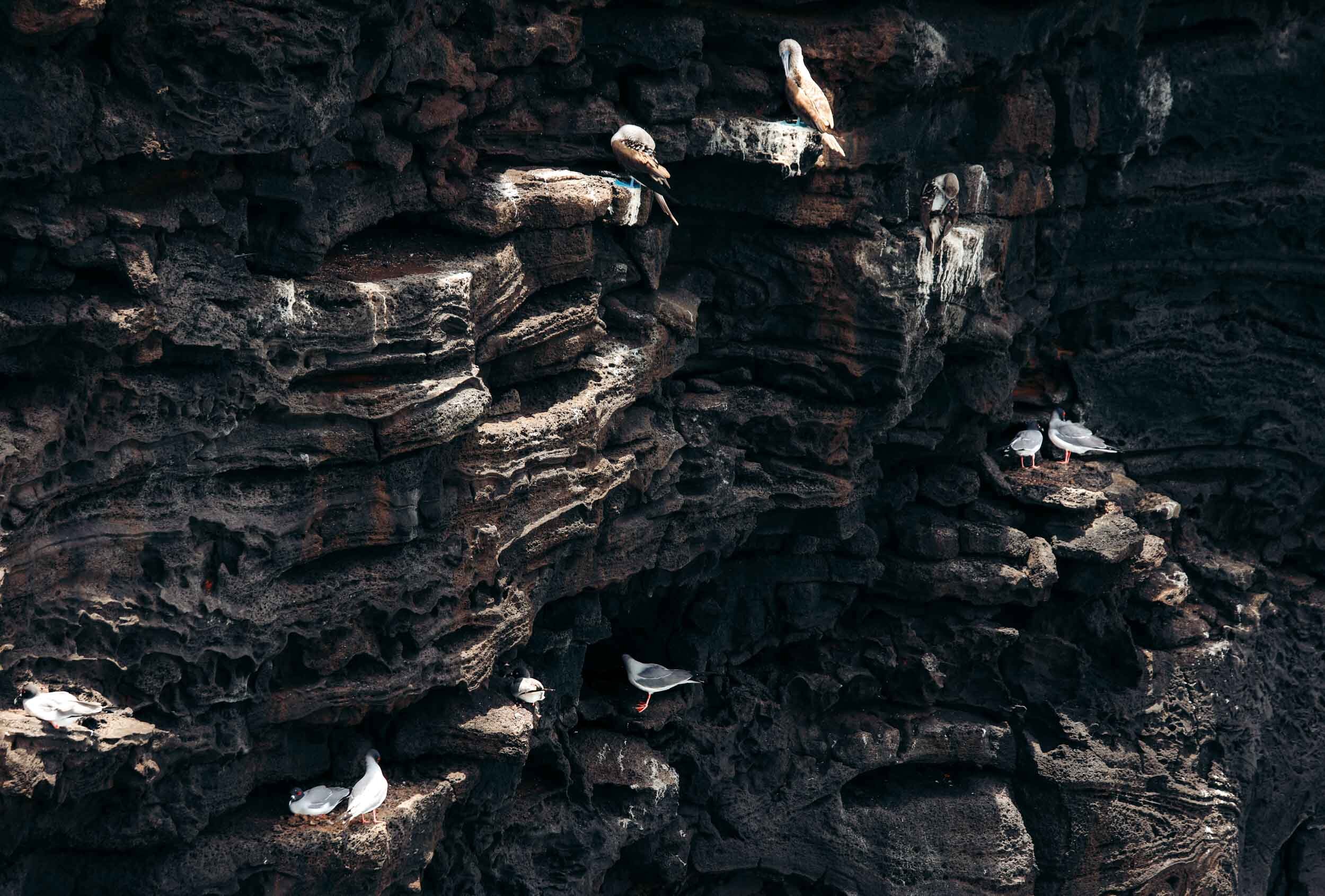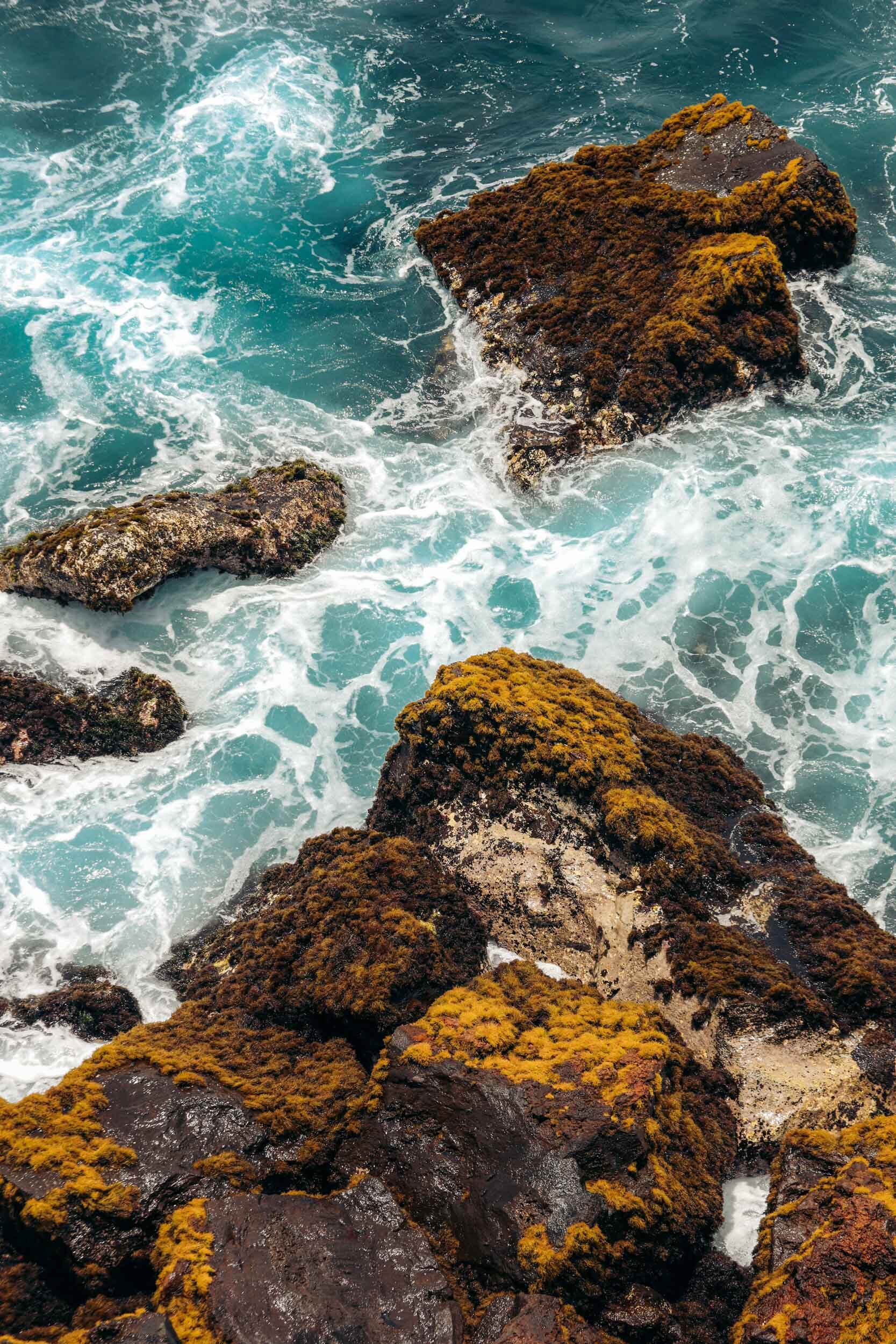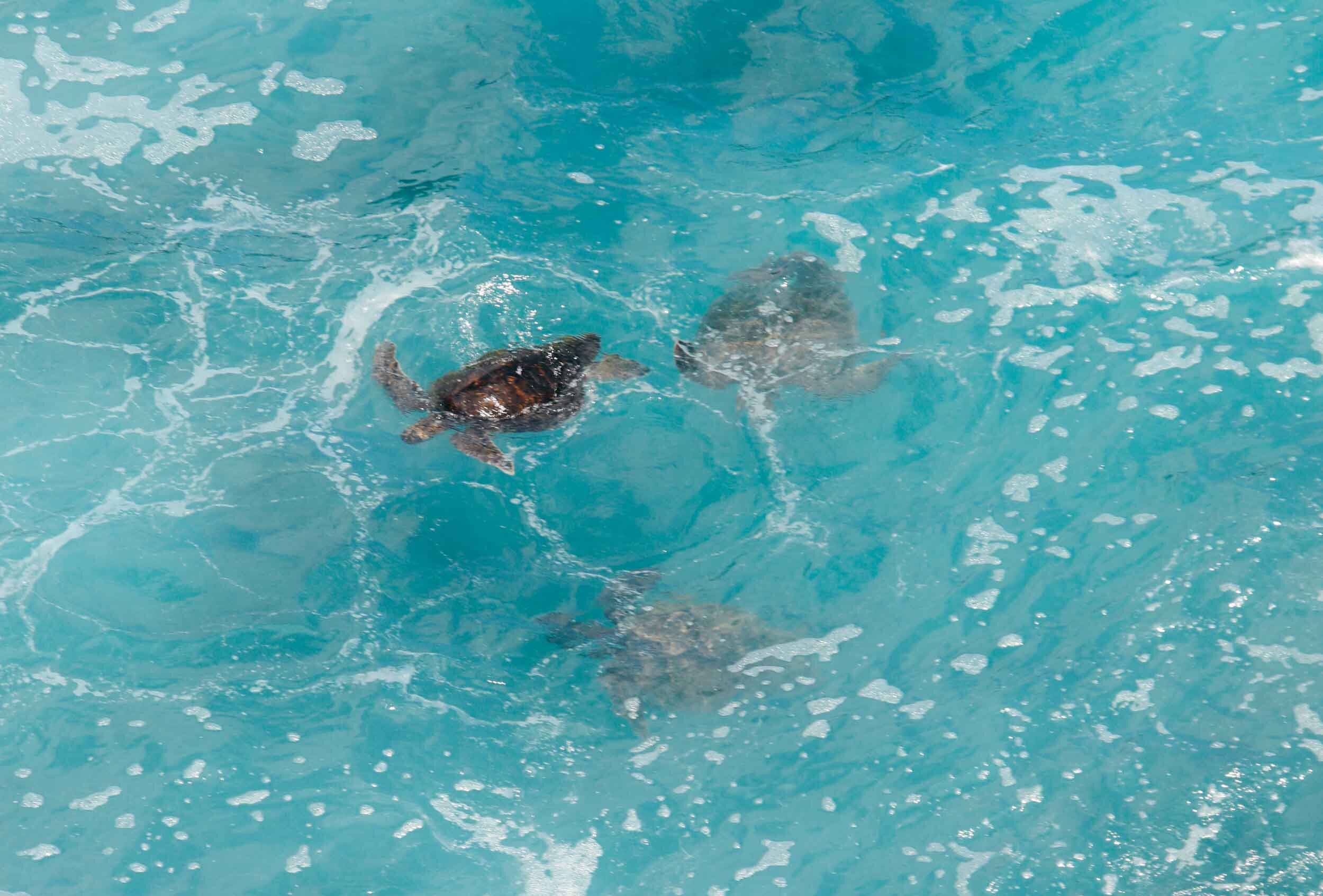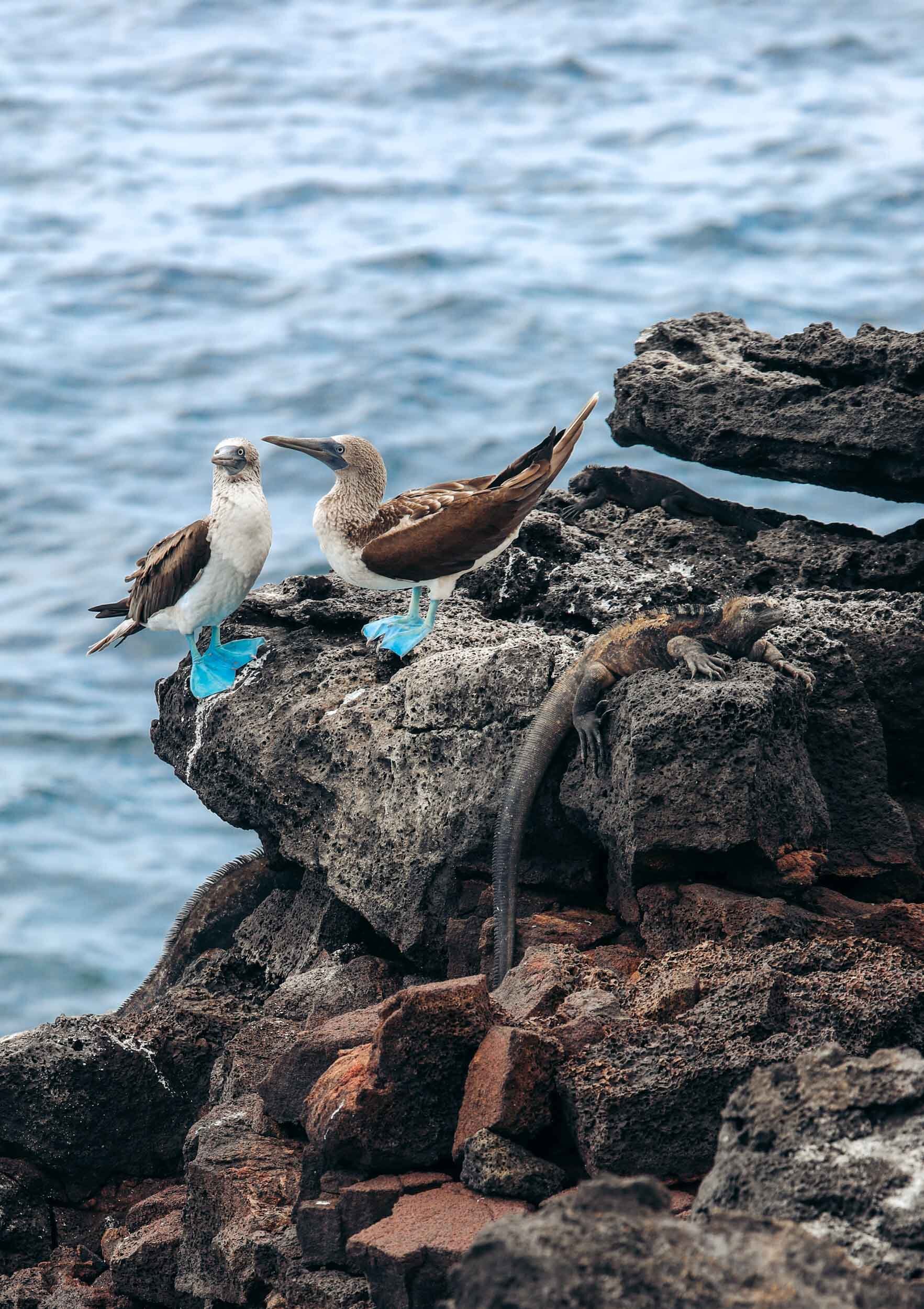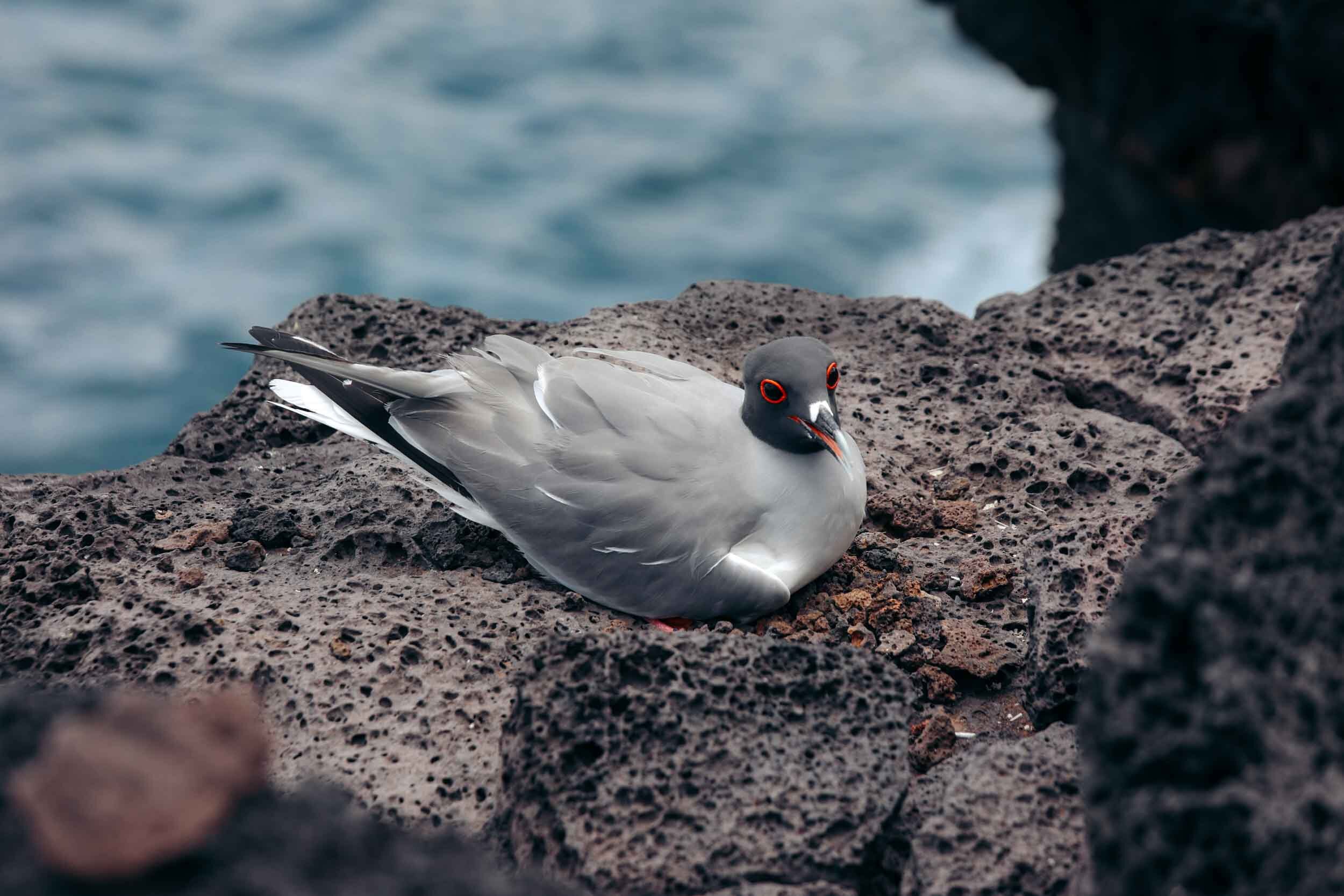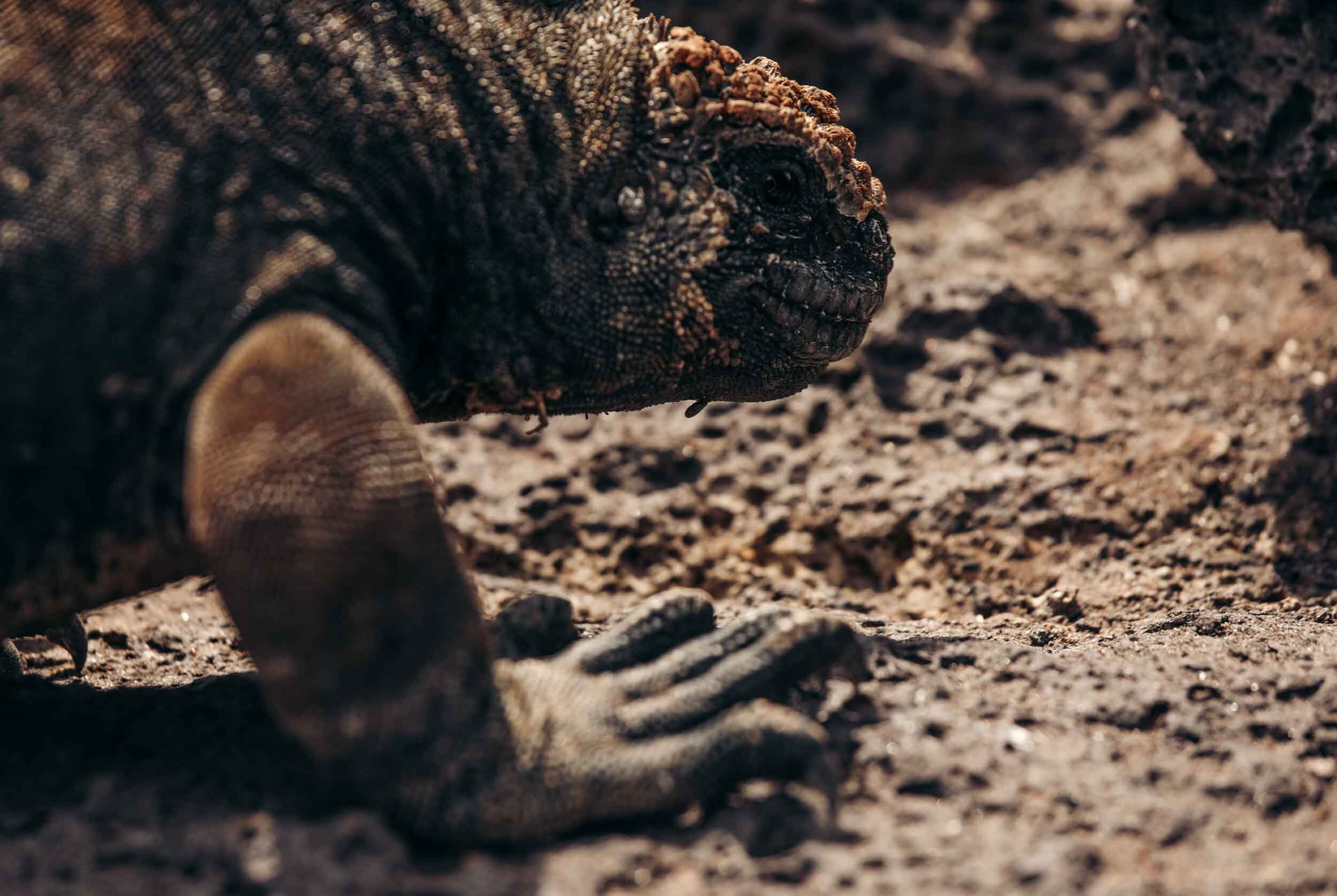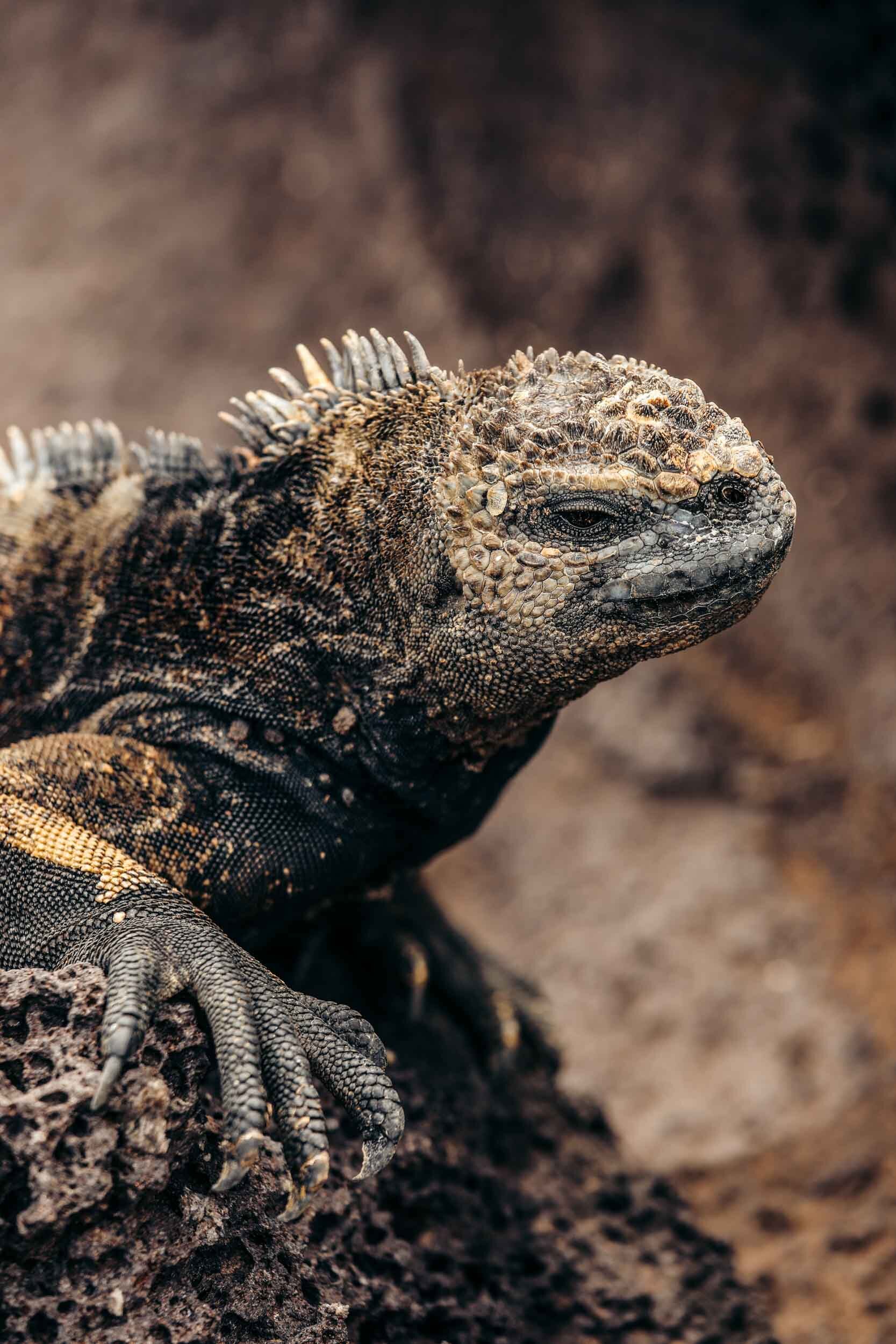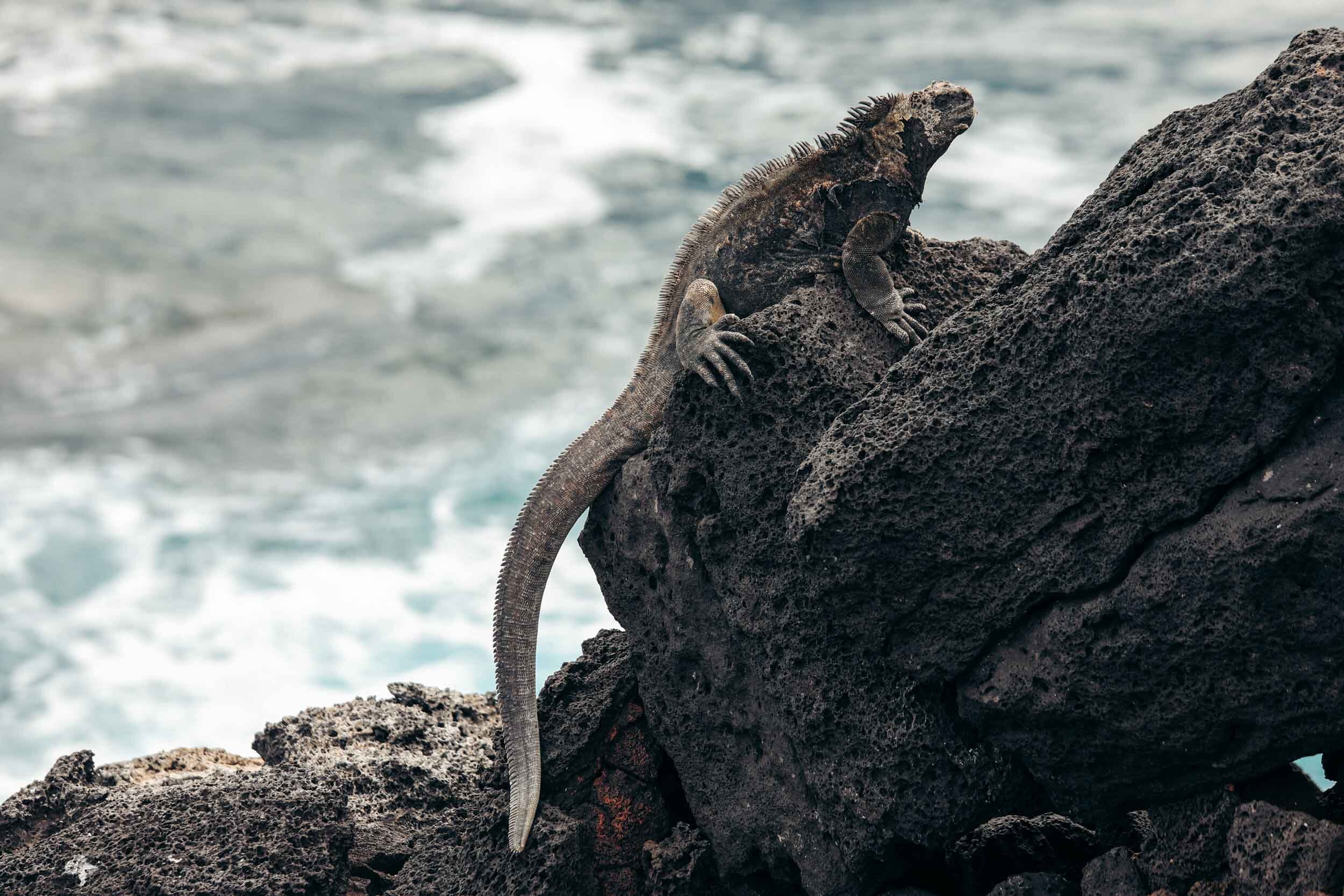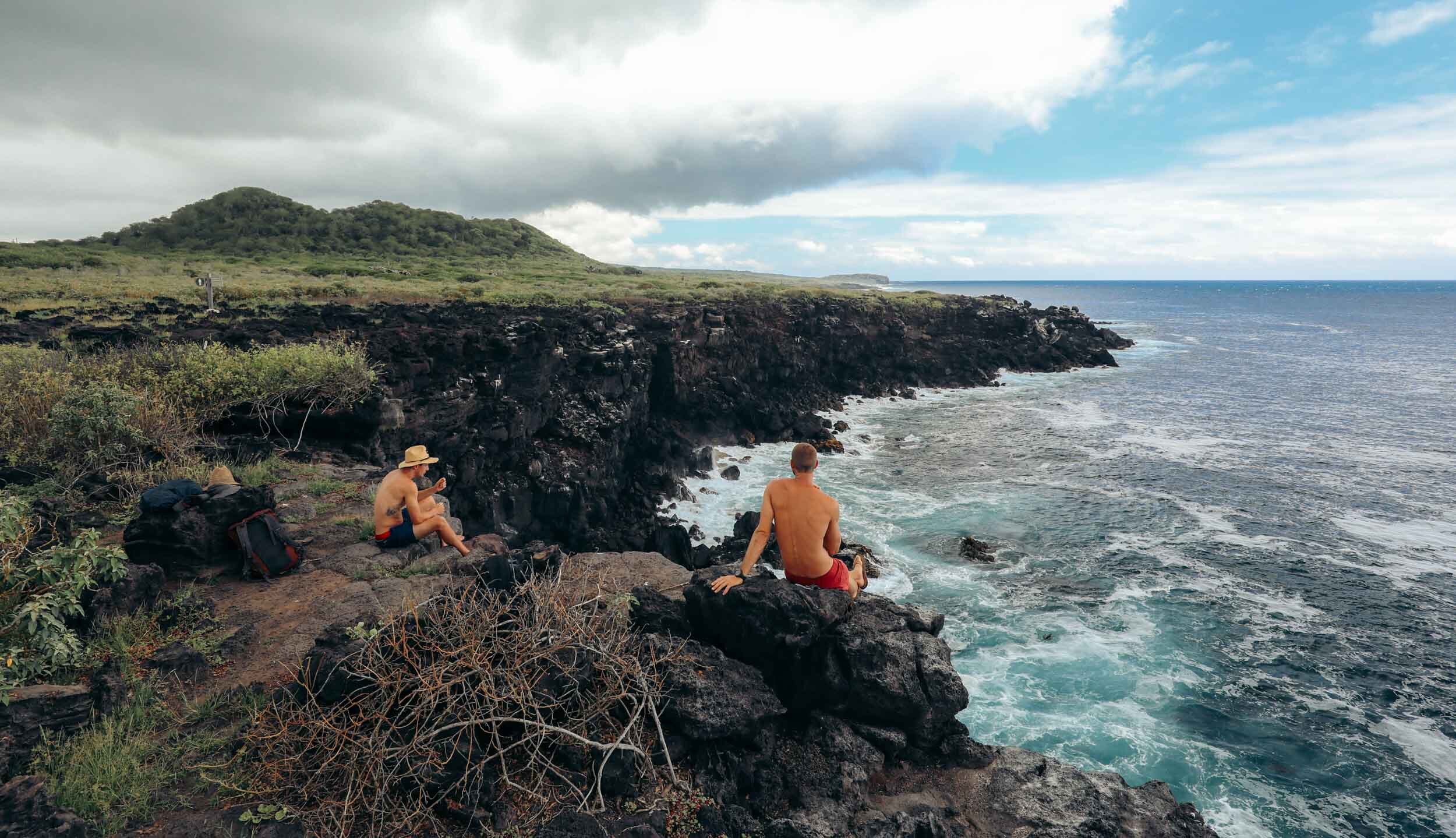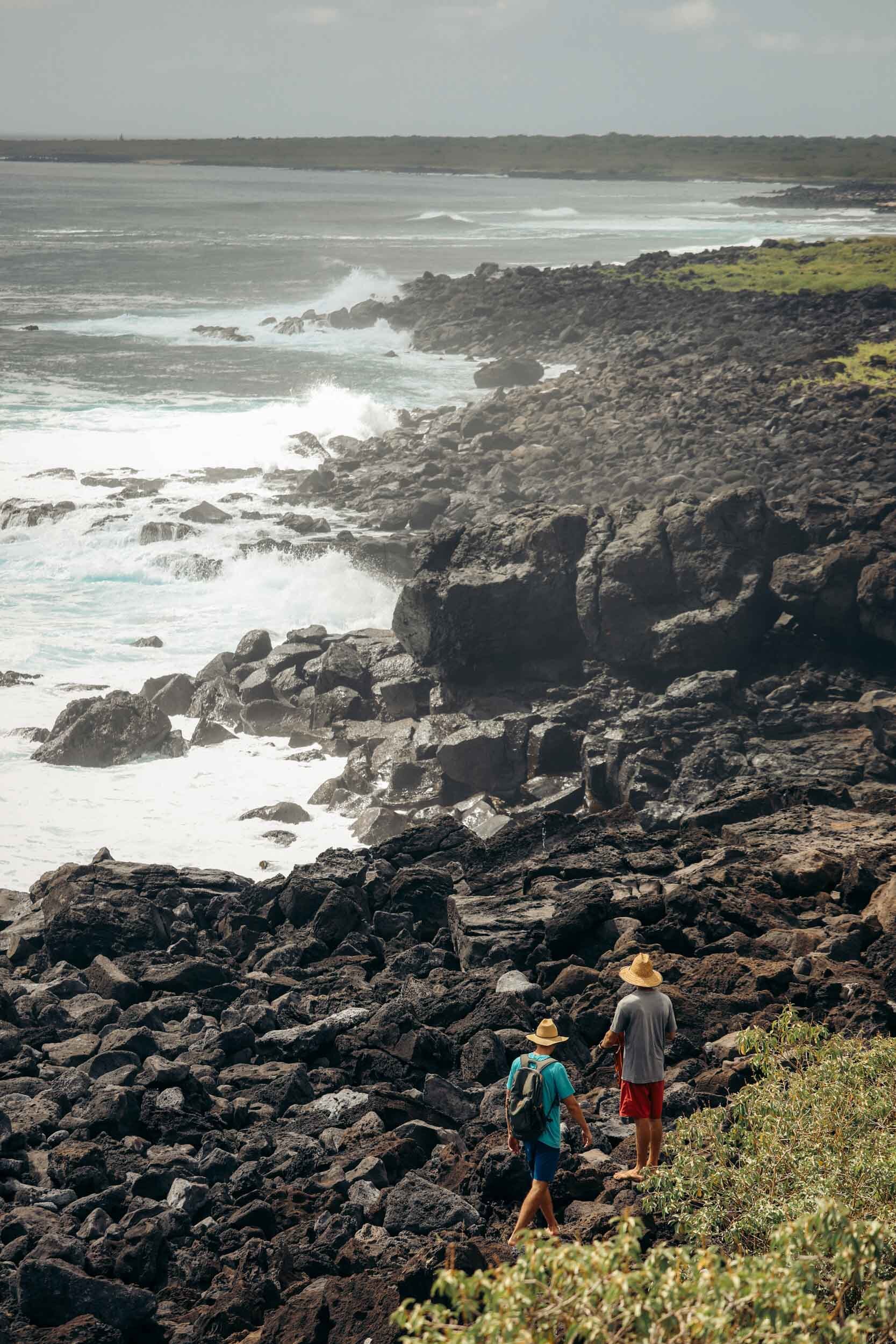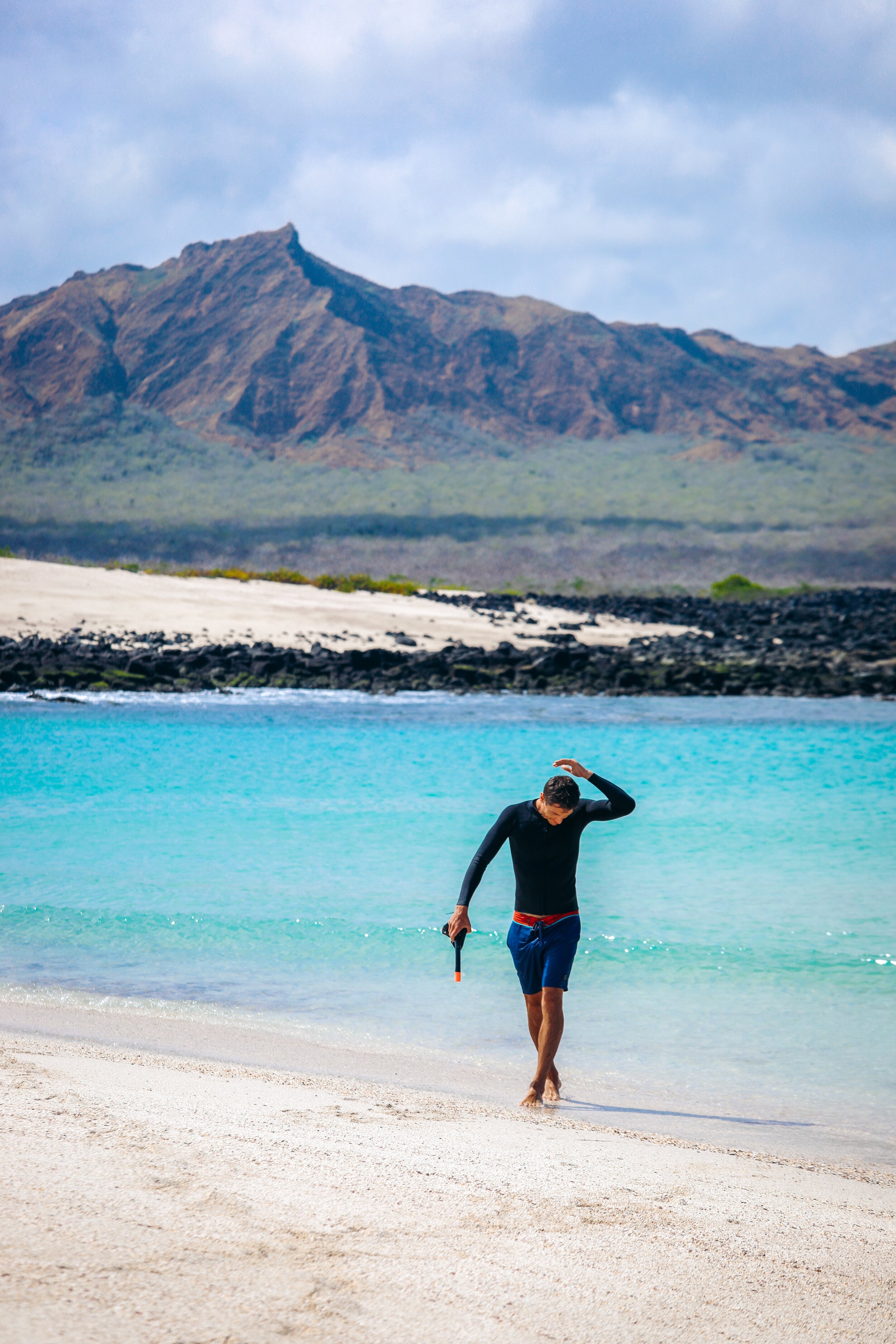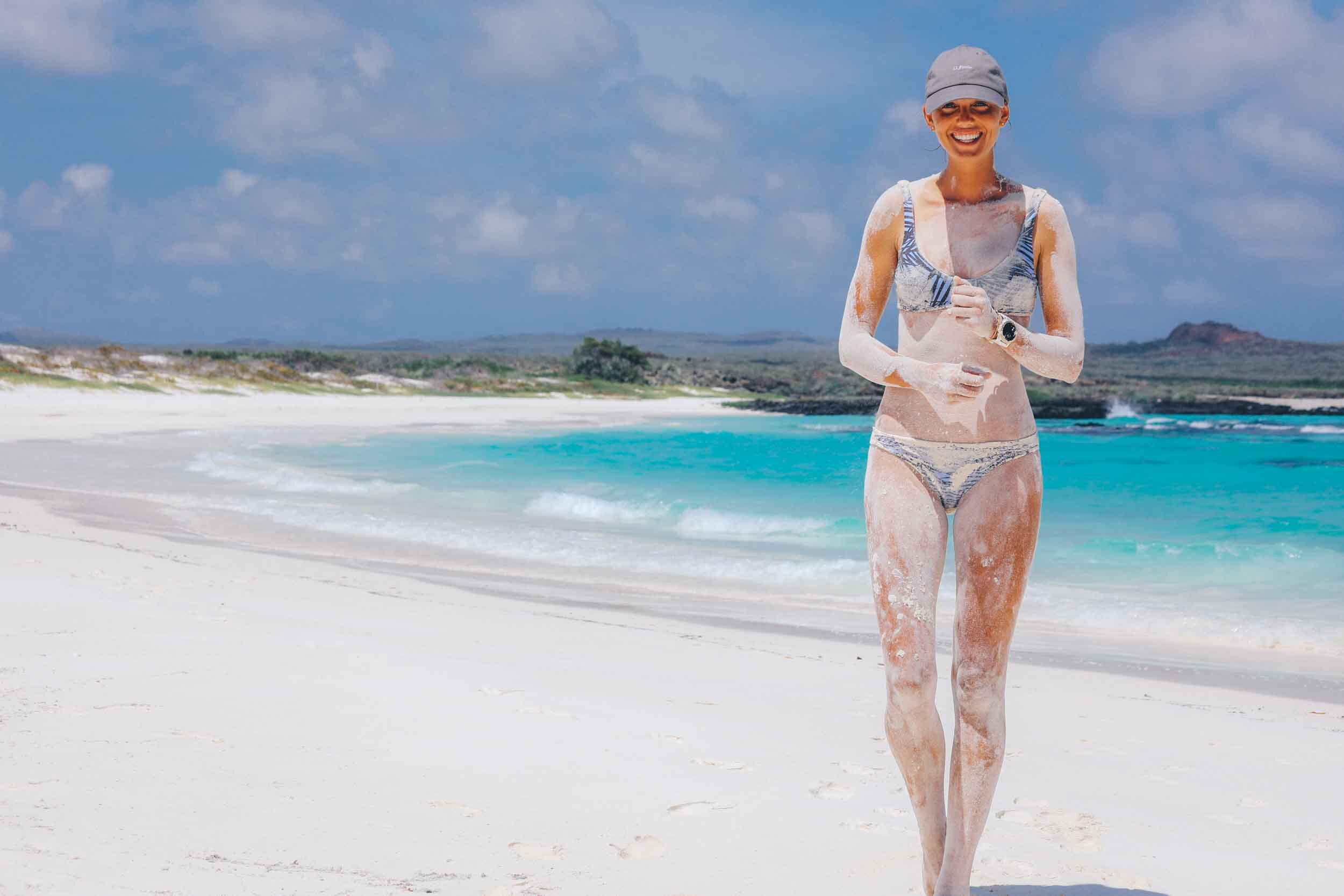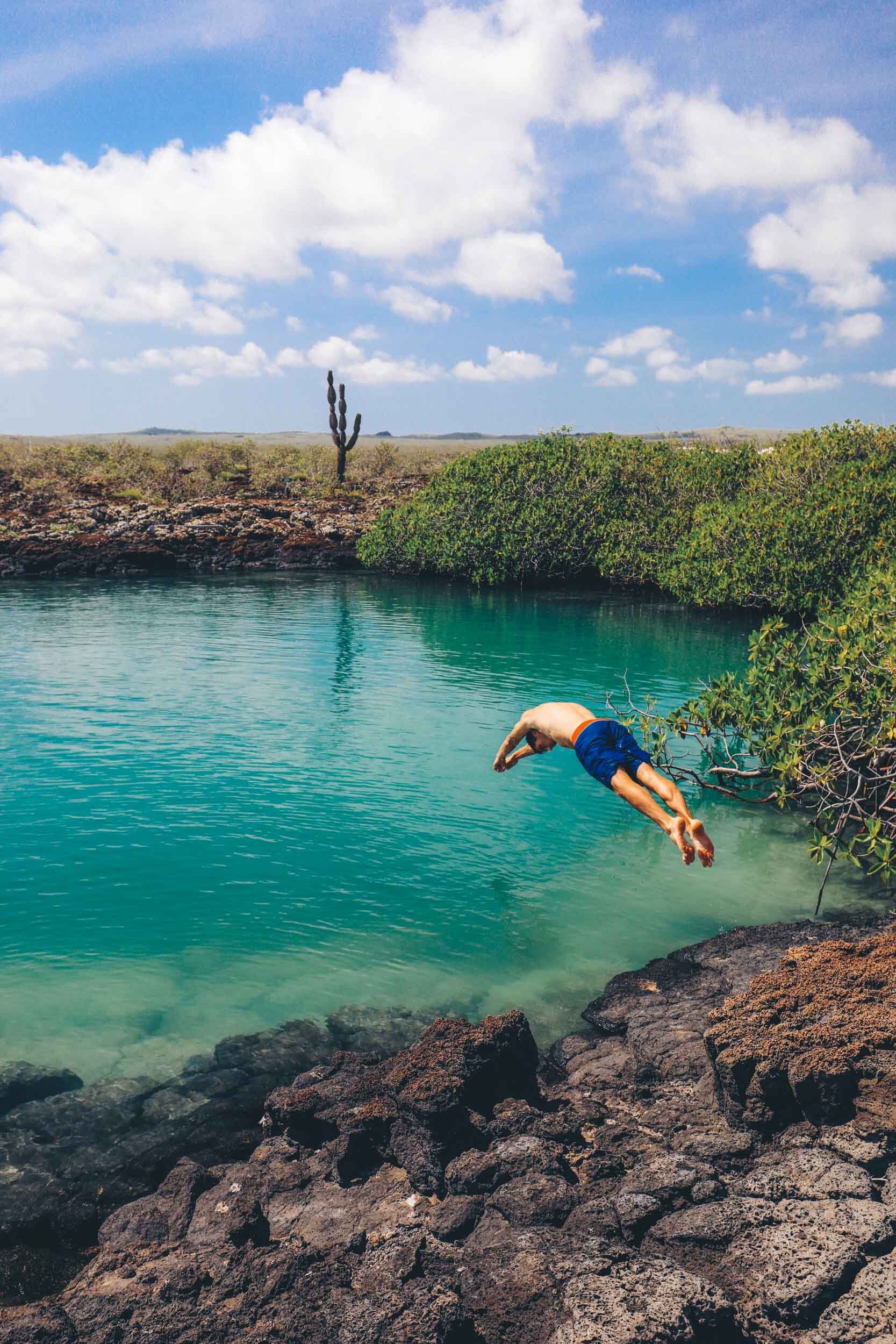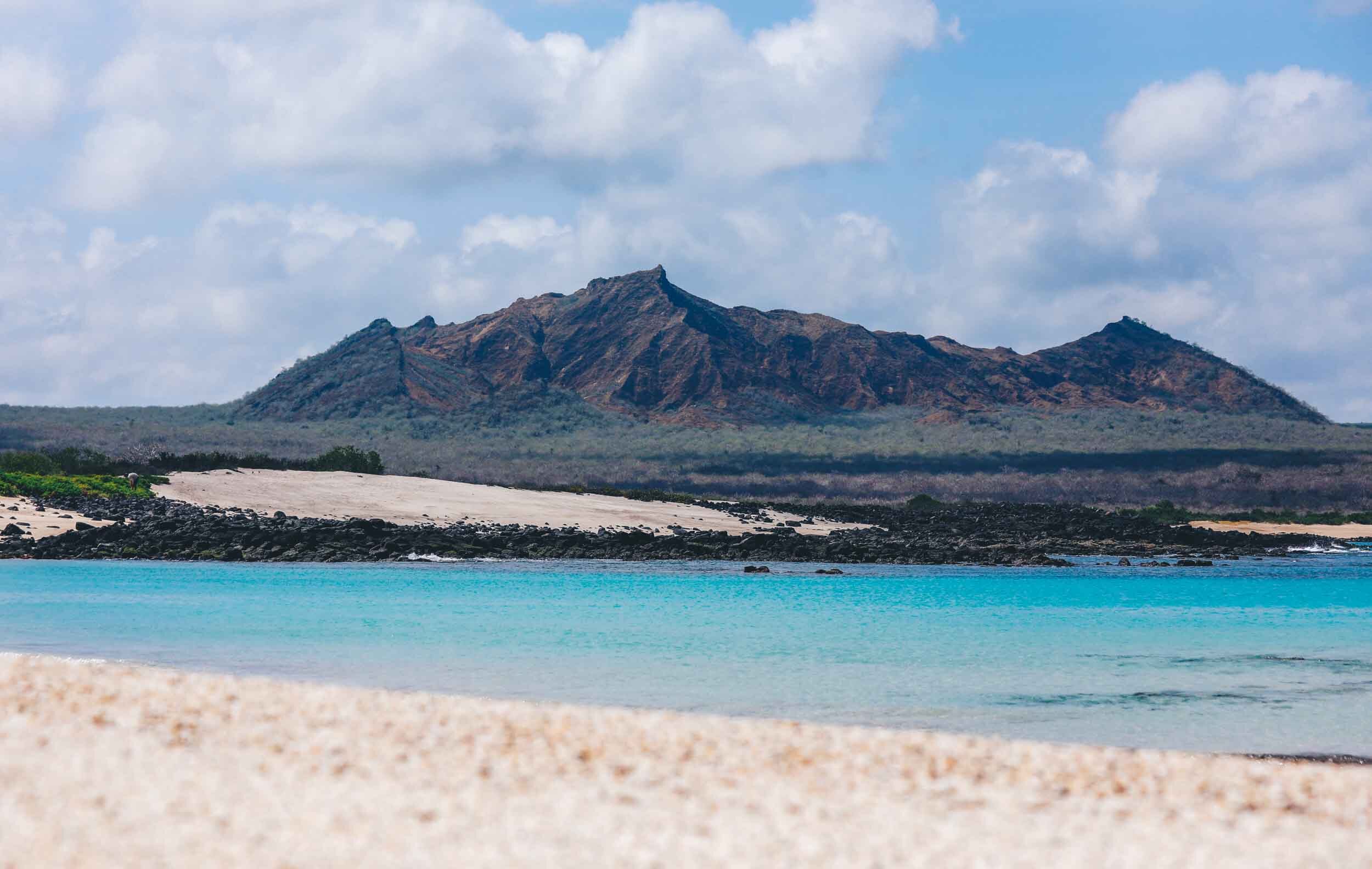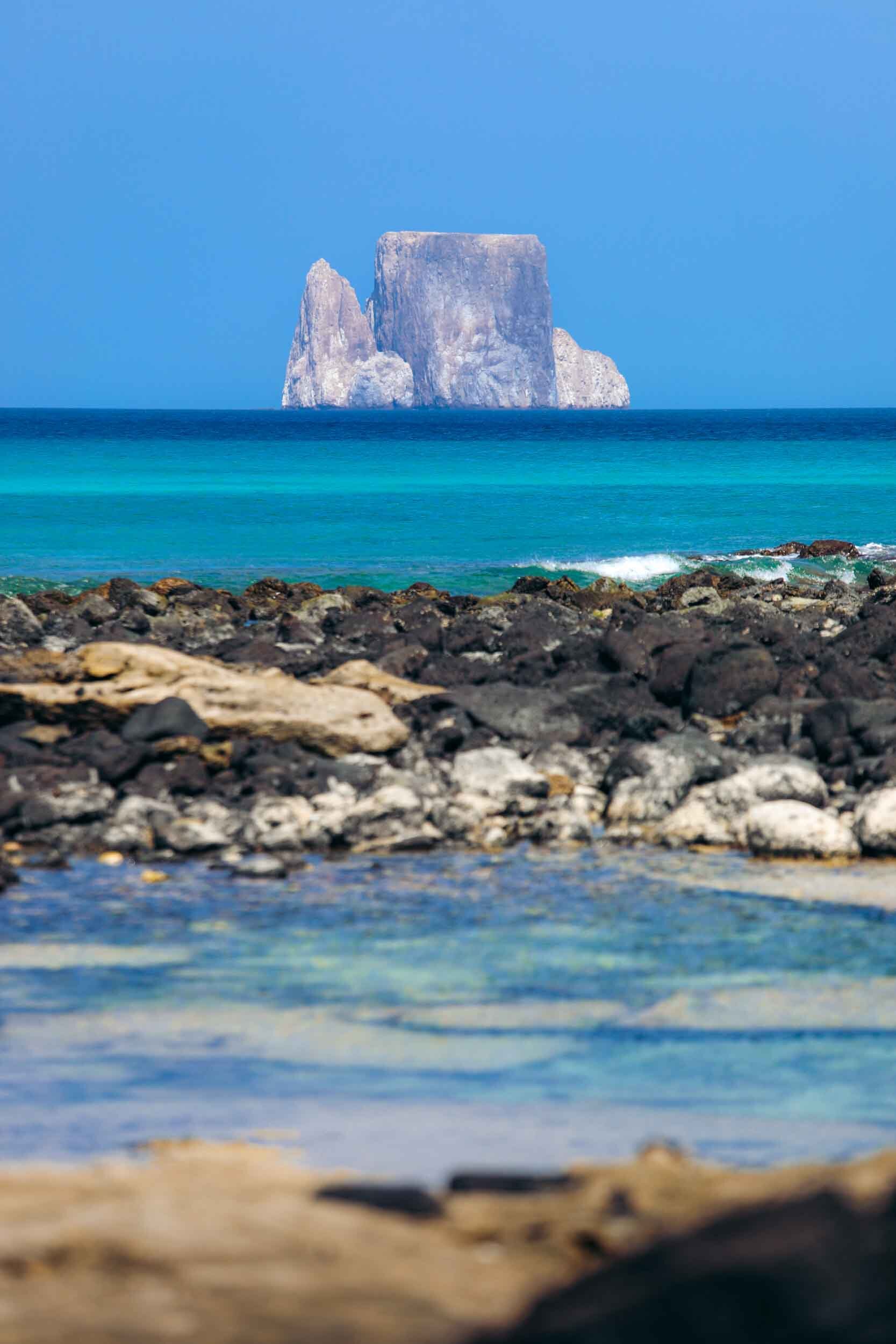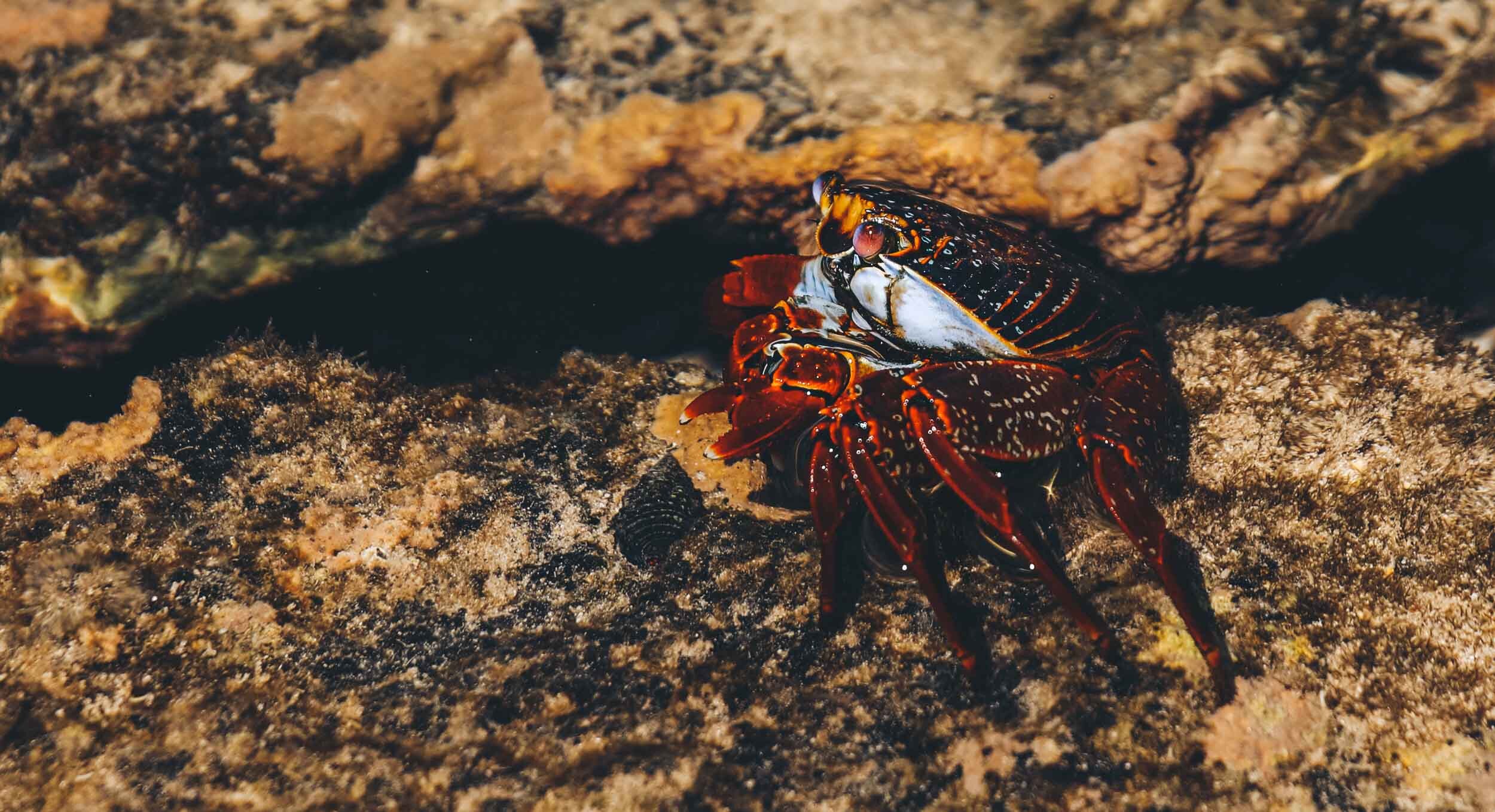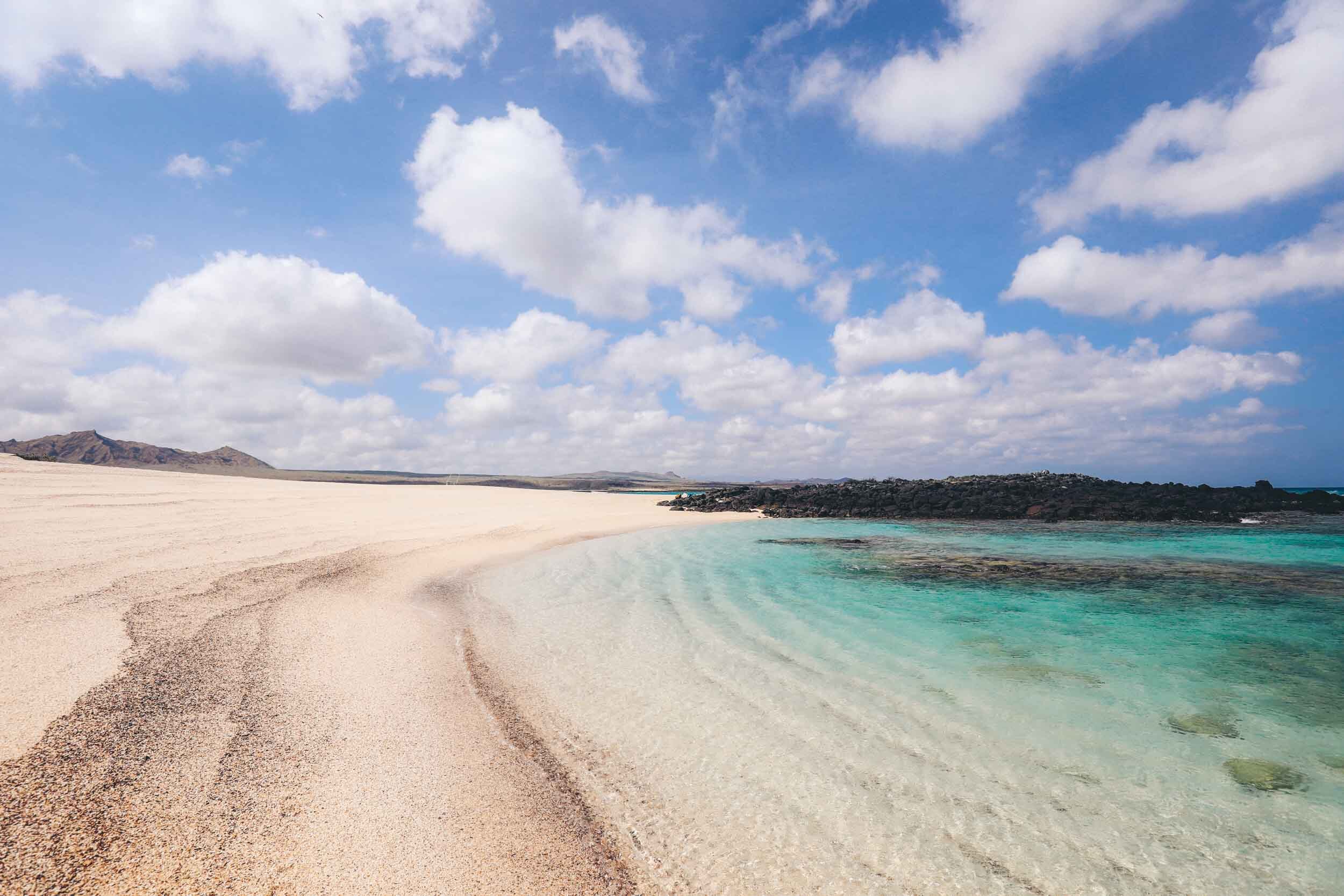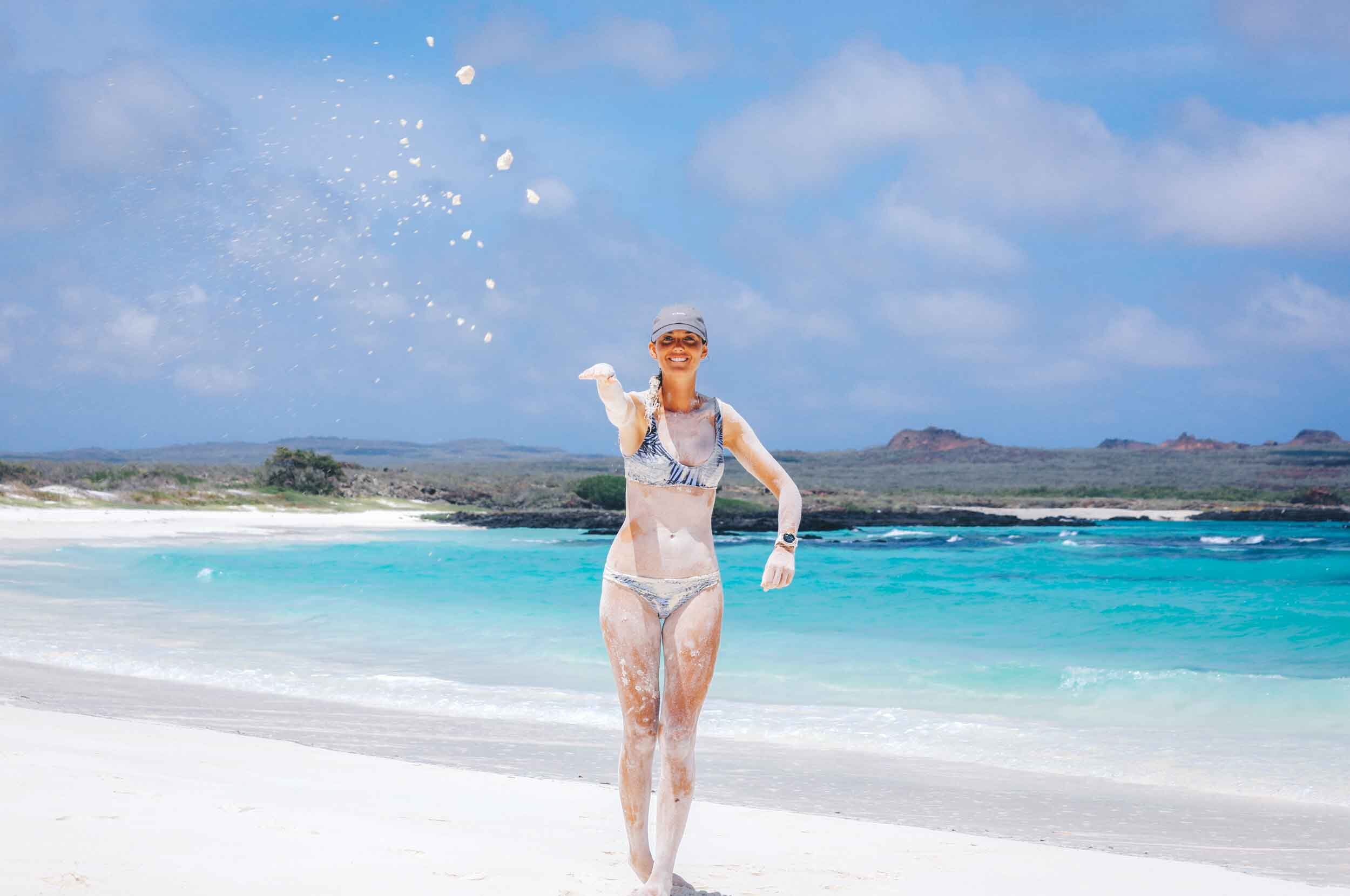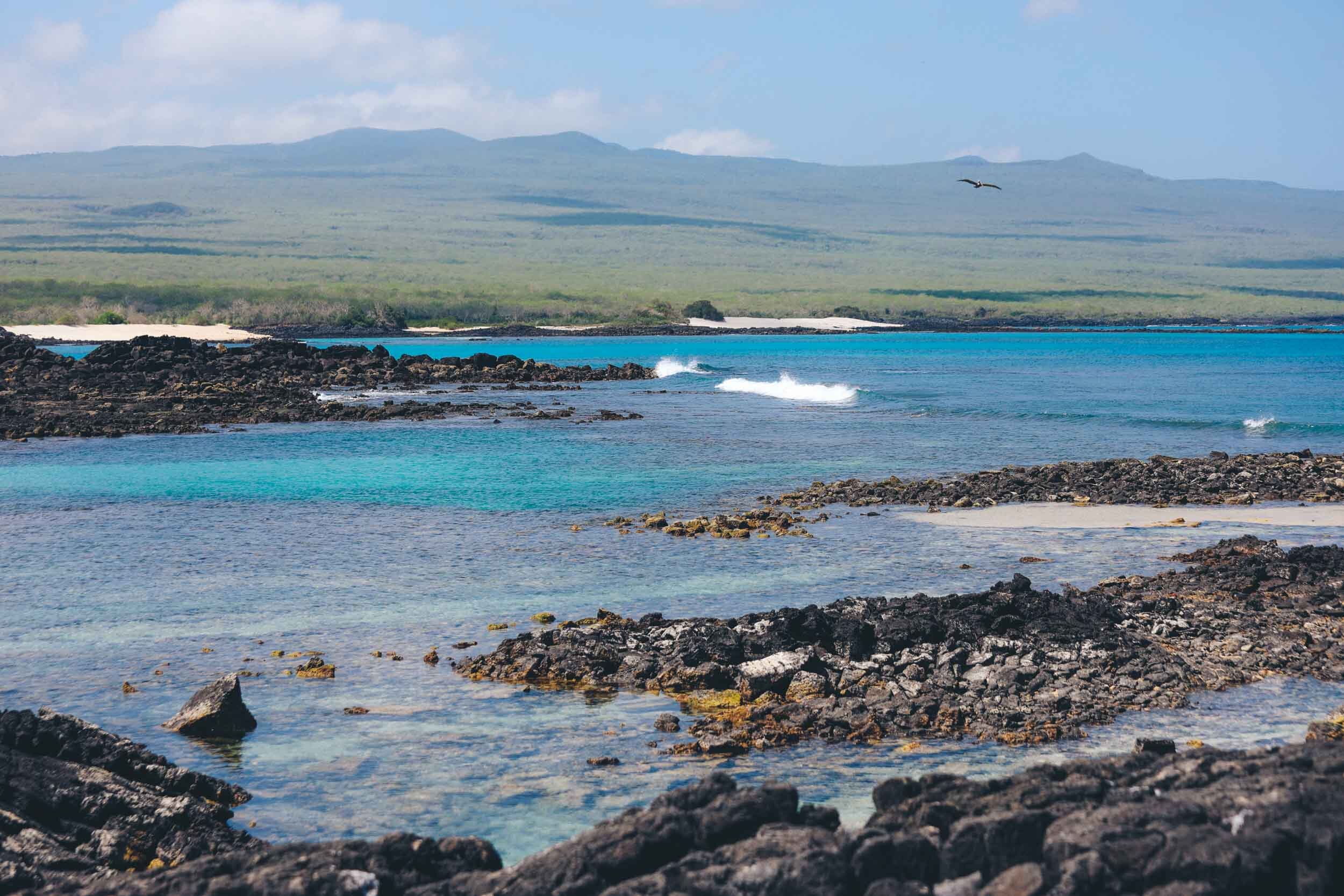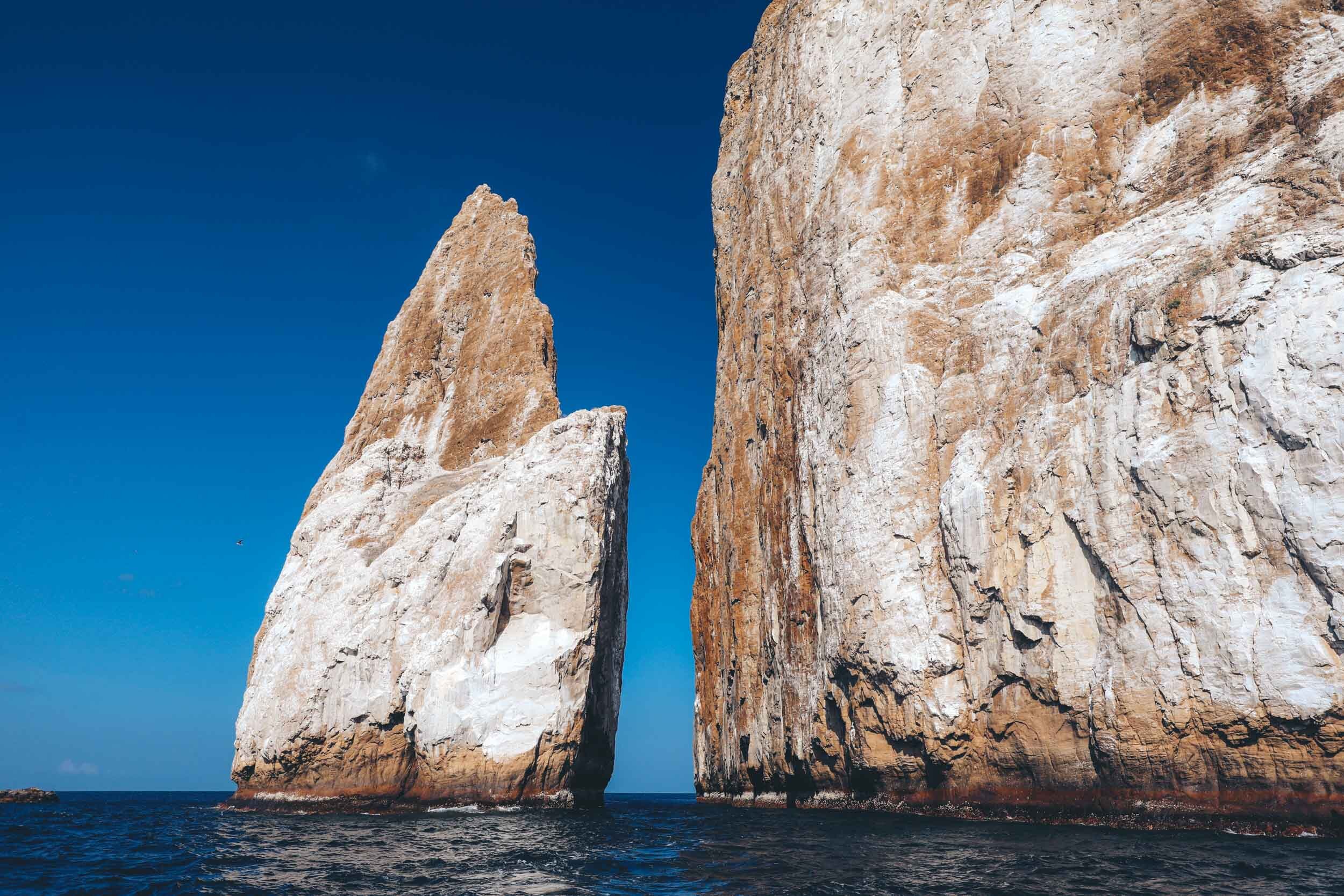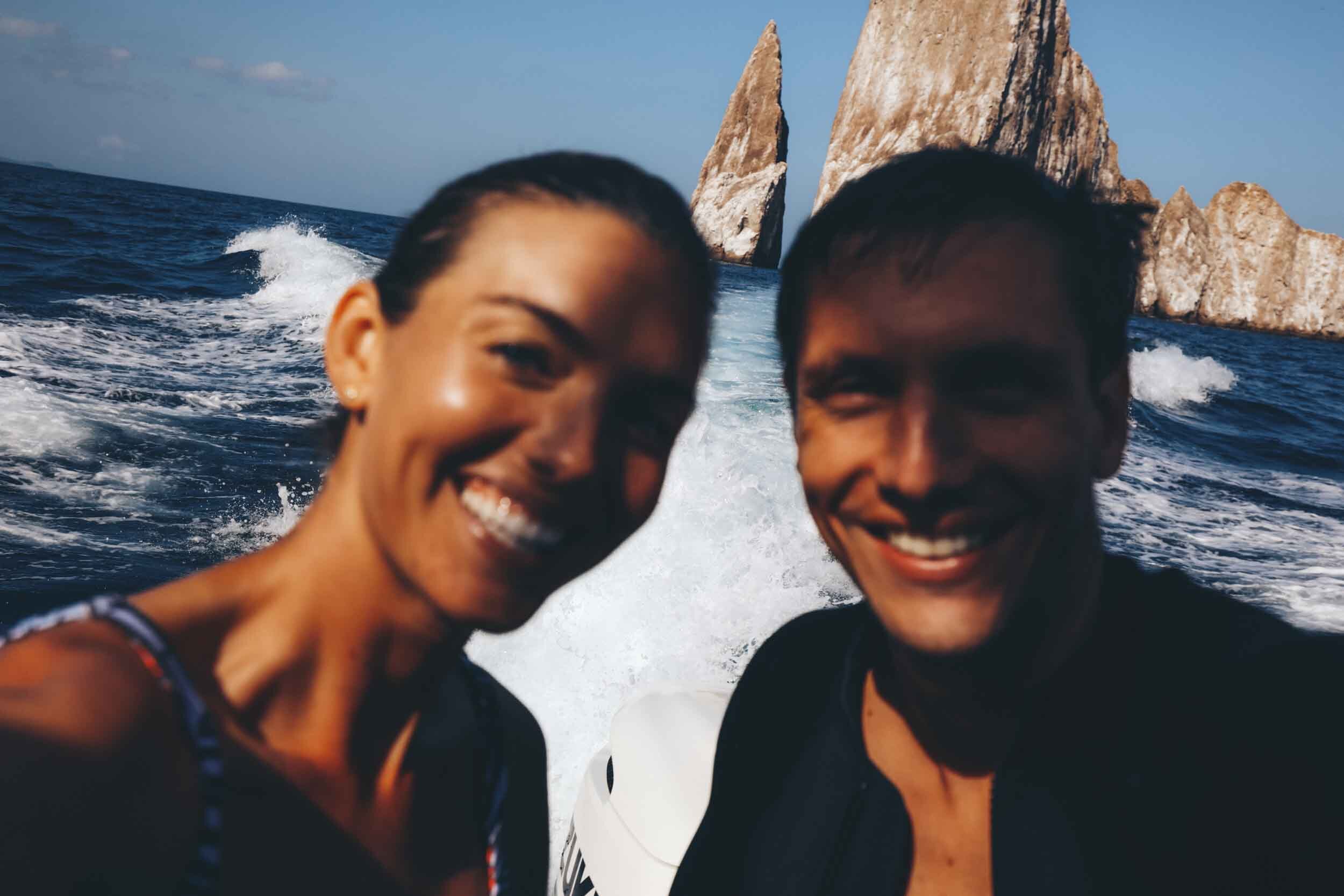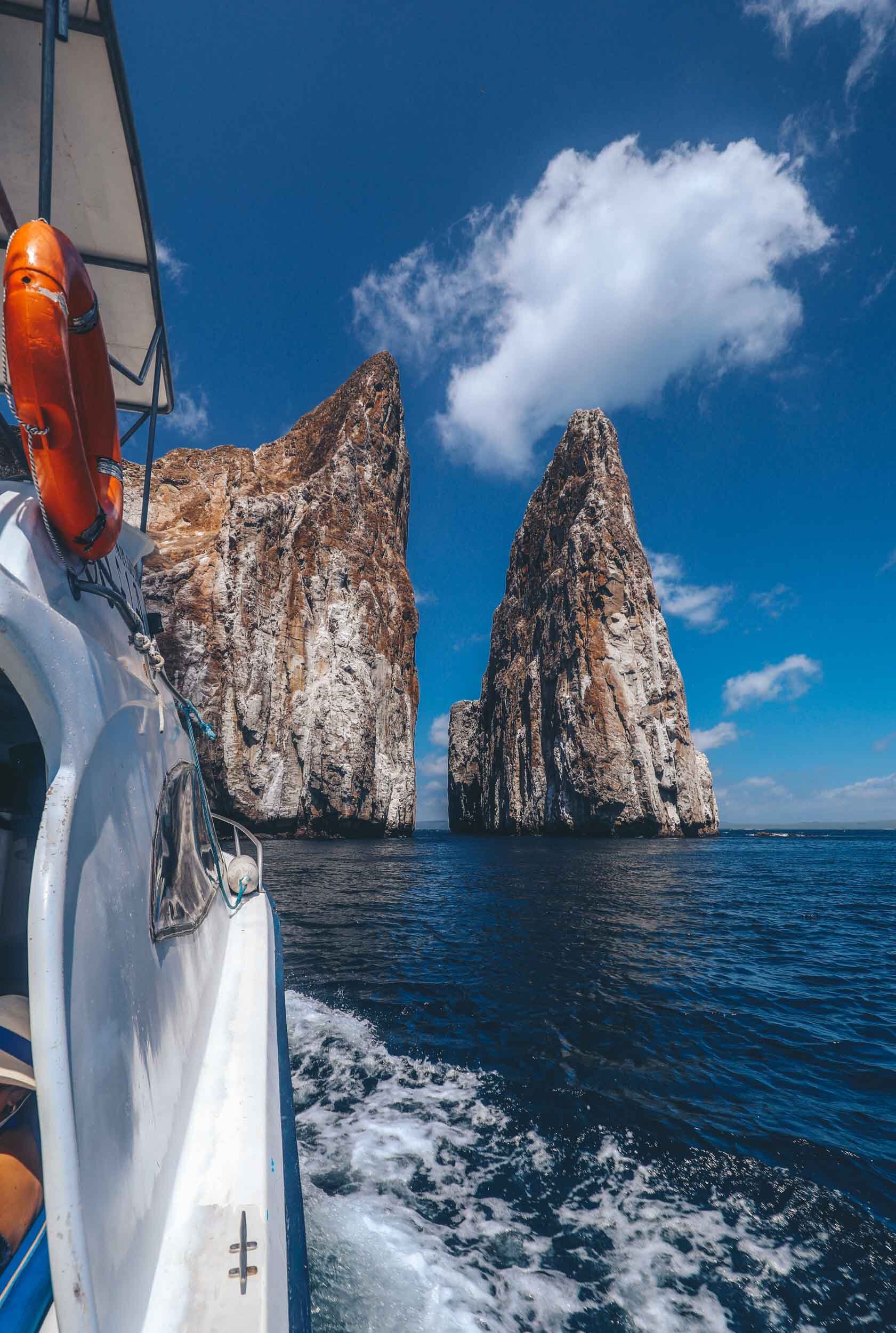San Cristobal, Galapagos
The island of San Cristobal, Galapagos is many boats first landfall after leaving Panama, and it’s a welcomed sight after several days at sea. After a long night of advanced drifting, high speed sailing and then motoring through a myriad of wind conditions, we could finally smell terra firma!!! As we motored along the north side of San Cristobal, over glassy waters, we were greeted by a welcoming party of birds, dolphins, whales and even a manta ray. After a week at sea we were overwhelmed with excitement.
The island of San Cristobal has a ton to offer and we wanted to sample it all. Unfortunately, during our crossing I developed an ear infection and unbeknownst to me it had become quite severe. So bad in fact, that on our first outing my ear drum actually ruptured and would land me in the clinic and later to the hospital, but more on that later…
All boats that enter the Galapagos have to be inspected and fumigated, this is to help mitigate any foreign insects from invading and destroying the fragile ecosystems here. We just so happened to time our arrival with many of the World ARC boats (a group of boats on a one year circumnavigation). Because there were so many boats arriving, what is normally a long and rigorous inspection, ended up being short and hasty. After we arrived and got our anchor set, a heavy rainstorm blew in and delayed most of the mornings inspections pushing ours back by several hours. By the time the officers arrived they were hot, sweaty, rain soaked several times and still behind schedule. The water was completely brown and our bottom inspection took all but a minute, as the diver couldn’t actually see the bottom in the murky water. Shortly after the immigration officers and inspectors left, it was time to welcome our newest crew member on board.
Several months prior we had posted to our Instagram story that we were looking to invite someone on board for our Pacific crossing. We got dozens and dozens of messages, but one in particular stood out. We knew right away from Wilky’s email that he would be the perfect fit. Wilky is from Chile, but had studied in France to become a pasty chef, he speaks fluent English, Spanish and French (which would be super helpful in French Polynesia), and is a kite surfer, mountain climber, traveler and adventurer. After reading his email we asked to hop on a FaceTime call and within minutes were inviting him out and into our home. The plan was for him to meet up with us in the Galapagos and to continue voyaging out west.
Sure enough Wilky became like family, he ended up spending four months on board, and over the next few weeks and months we shared some of the most incredible memories of our lives together.
After we picked up Wilky from shore, the man in charge of fumigating arrived. While talking with him about the top things to see on the island, he offered to take us on a tour in his sister’s car after he finished fumigating Agape. We were excited to have the opportunity to get out and see some of the island’s highlights and top tourist destinations our first day!
First up was Lagoon El Junco, a large crater lake holding around 9 million gallons of fresh water. The massive crater was formed in the caldera of a volcano, researchers have said it’s existed since the end of the ice ages! Being a freshwater lake atop a hill on a small island, the only inflow is from the heavy rains that occur in the highlands during the rainy season. Along with the many frigate birds, pin tails and tropic birds you may see here, if you look closely you can find wild berries!
After stretching our legs it was off to the main attraction, La Galapaguera Tortoise Habitat. This is a free government funded research program open to the public for self-guided tours. It’s mission is to breed, rehabilitate, and repopulate the island with the endemic giant tortoise.
Along with the amazing up-close encounters with these gentle giants, the tortoise habitat has posted information about the tortoises and their habitat, answering many of the questions we had. With the exception of the actual breeding program, this is a cage free facility offering a truly unique experience. It’s not uncommon to be walking down a trail only to find it blocked by a large sleeping tortoise, or even two procreating lol. This was a wonderful introduction to the Galapagos Islands.
The giant tortoises are one of the main species visitors want to see when they visit the archipelago, and this center provides a wonderful opportunity to do so. Today, giant tortoises exist on only two remote archipelagos in the world: the Galapagos Islands and Aldabra in the Indian Ocean, east of Tanzania. Here the Galapagos tortoises can weigh in over 900 pounds! They are massive!
Galapagos tortoises are native to seven of the islands here in the archipelago. With lifespans in the wild of over 100 years, it is one of the longest-lived vertebrates in the world. A captive individual, Lonesome George, lived at least 170 years!
These tortoises prefer a warm arid climate, and after a couple hours hiking around, taking thousands of photos and videos, we found ourselves hot and ready to cool off.
Puerto Chino
Next stop the beach please!
Puerto Chino is not really a port, but a beautiful white sand beach with small waves and plenty of marine life to keep you entertained for hours. This stunning beach is located 30km away on the far side of the island from the main port. Access is possible by renting a taxi or joining a tour.
From the parking area there is a well maintained path that will take you down to the beach. There are shaded areas for shelter, but no stores to purchase anything, so bring enough water and snacks to get you through the day. You need to pass over some lava rocks to get to the water and sometimes they can be sharp, so be careful with your footing.
The water can be calm, with only small waves lapping on the shore, but watch out for strong currents if you are swimming and snorkelling. Here we swam with sea turtles, marine iguanas, seals, and rays. This beach in particular is a favorite with the locals as they can barbecue at tables in the shade while they watch all the crazy gringos cooking in the sun like their food on the grill.
Unfortunately this would be the first and last time that I would get to enjoy the water while in the Galapagos. On our car ride back I felt a sudden sharp pain in my ear and suddenly a thick fluid began to flow from deep inside my ear canal. I have a very high pain tolerance for a lot of things, but this was not one of them. I could hardly stand it, I was in so much pain. At first I tried to play it cool and thought I would deal with it back on board Agape, but after just 10 minutes I asked if we could make one more stop for the day, the clinic.
Here I found out that an inner ear infection had grown so bad that it perforated (made a small tear) in my eardrum to relieve the pressure. Later at the hospital I was told just how bad it was and that I might need surgery to fix it. Luckily, after a call home and some intensive googling, we found that most of the time strong antibiotics and keeping the ear dry for several months can give the ear time to heal all on its own. So, no more diving or snorkeling for me. It was pretty heartbreaking to be in one of the top dive and surf destinations in the world and not be able to get in the water.
Many people, including ourselves, thought the Galapagos would break the bank! If you only do paid tours, it absolutely will, but for the budget minded cruiser that can’t afford to do $10,000 live-aboard dive charters or daily $200 tours, there is still plenty to see and do on your own.
The trip we took our first afternoon was an all day outing to some amazing places, wiith wildlife, picturesque vistas, and soft white sand beaches, it was well worth the $20/person. Rachel, We all agreed that it was money well spent.
Loberia Beach is synonymous with surfing, but whether you are surfing or not, this is a great place to spend the day. You can make the 45minute walk from town or grab a taxi for $2 a person. We’d recommend walking there and taxing back. Once you get to the beach you can take a break in the shade and watch the surfers, or join in but don’t stop here.
If you continue up to the cliffs (on your left as you face the water), down the lava rock strewn path you will be rewarded with a birds eye view of massive sea turtles, nesting tropic birds, blue footed boobies and swimming iguanas. Watch your step on your way to the cliffs though, not only is the path uneven and the rocks sharp, but iguanas nap lazily on the rocks, warming up after a swim. Since they do not fear humans, they don’t really move either and several times we found ourselves almost stepping on them.
The Interpretation Center. The centre is a good place to start with for 1st time visitors to Galapagos as it documents the history of the islands and the wildlife that can be found here. Here they explain the history of the islands with detailed information and illustrations about the wildlife and indigenous vegetation, and is presented in a chronological order so you can do a self-guided tour through the history and significance of the Galapagos Islands at your own pace.
It also explains human’s roles and continuing story of evolution, culture and findings, and how farming and mining took a toll on the island before it became protected. . The Galapagos Islands have many different programs to protect the environment and the unique wildlife that lives here, but if you make the walk to Loberia, you will find that even though the islands are now protected, farming and mining are still very active today.
After the Interpretation Center continue on to hike up to Cerro Tijeretas. This mild hike up paved paths offers great look outs and if you bring your mask and fins you can even walk down to the Muelle Tijeretas, a beautiful protected bay that has amazing snorkeling, or so Rachel and Wilky told me since I was banned from getting my head wet. I did paddle over here from the anchorage on our SUP and even from the surface I saw sharks, turtles, schools of fish and a couple of swimming iguanas. Well worth an afternoon to see it all!
If you’d like to pay to see a little more of the island there are a number of great tours and dive trips you can do. Rachel will fill you in on those!
SNORKELLING OR DIVING AT LEÓN DORMIDO (KICKER ROCK)
Kicker Rock is one of the most well known sites in the Galapagos Islands. It’s real name is León Dormido, meaning Sleeping Lion.
The formation is the remains of an ancient volcanic cone, eroded by the sea over thousands of years. It towers 140 meters above the Pacific Ocean, and is home to many types of animals, both above water and below and is a popular site for snorkeling and diving because of its amazing location and the incredibly unique ecosystem the area makes. It is a true underwater paradise!
Winky and I stopped here to snorkel on our 360 tour of the island and I was blown away by the amount of life underwater that I scheduled a solo dive trip back at Leon Dormido the next day. If you are a diver I highly recommend doing a few dives here.
360 Tour
This action-packed tour is a great way to see most of San Cristobal’s unique locations in one day.
This tour usually includes visiting several places to see a lot of the animals, snorkel or just go for a swim. The stops usually include: Rosa Blanca, Punta Pitt, Sardine Bay, Punta Pucana, Cerro Bunjo, and Kicker Rock.
The tours start at 7:30am and go to about 5pm, but your time at places is limited as the day is jam-packed. There are many companies in town that offer this tour, but ask around for the best price. Be sure to check what's included in the price, as some companies don’t include a wetsuit and snorkelling gear.
Prices for this tour range from $150 to $200. It’s not a cheap day out, but if you only have a few days in San Cristobal, it might be your best option.
We spent a week exploring as much as we could of this beautiful island, and I think it ended up being our favorite of the islands we visited. We hope to make it back to San Cristobal again one day, but for now we were off to see Santa Cruz!

